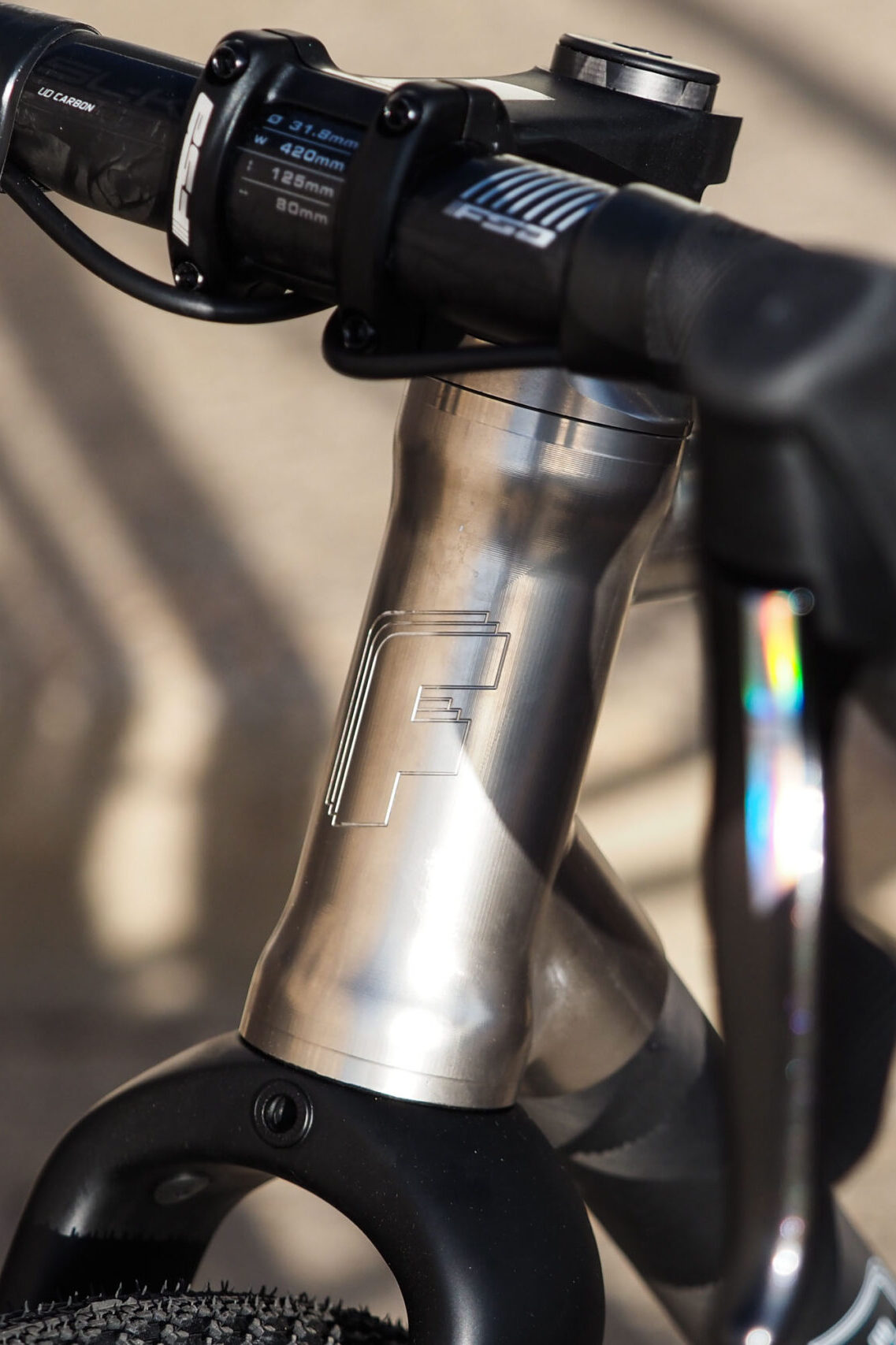Framework Bicycles occupies a modestly sized workshop in Hamilton, Ontario, a once-booming industrial outpost just outside of Toronto. But yet despite only making bicycle frames since 2022, Jonathan Kennedy – the one-person show behind Framework – is doing some truly remarkable stuff behind the building’s nondescript facade, and what emerges is quite possibly the finest-made bicycle frame I’ve ever laid my hands on. The level of precision and thoroughness on display here is astounding, so much so that it lays bare how sloppily made so many mainstream frames – even flagship ones – can be.
But does that level of meticulousness in construction directly translate to real-world performance? Yes? Sort of. I think so, anyway. Look, it’s complicated. But regardless, if people aren’t paying attention to what Kennedy is doing over there, they’d damn well better because while it may not be perfect right now, it doesn’t seem like that’s all that far over the horizon.
The short of it: An innovative and ultra-precise road or gravel frame made with CNC-machined aluminum lugs and filament-wound carbon fiber tubes, all produced in Canada.
Good stuff: Unbelievable build quality, striking aesthetics, wide range of customization options, decent weight, dead-on perfect bottom bracket and headset bearing assemblies, reasonable cost all things considered, remarkably sturdy.
Bad stuff: Restomod appearance won’t suit everyone (although there’s always paint!), custom process also potentially allows you to “get it wrong,” unproven track record.
A Framework primer
To say that Framework is doing things a little differently would be quite the understatement. I’ve covered the company’s processes both in a deep-dive factory visit and in a recent Geek Warning podcast with Kennedy himself, so I won’t go into too much detail here. But if you haven’t yet had a chance to check out either of those pieces (you should!), here’s a quick recap.
Almost all high-end bicycle frames these days are made from one of four major material families: carbon fiber, titanium, aluminum, or steel. In addition, the vast majority of those frames are made exclusively from one of those materials. There are some mixed-material exceptions, of course, such as from Bastion, Seven, Stein & Fenton, Zukas, Atherton, No. 22, and so on.
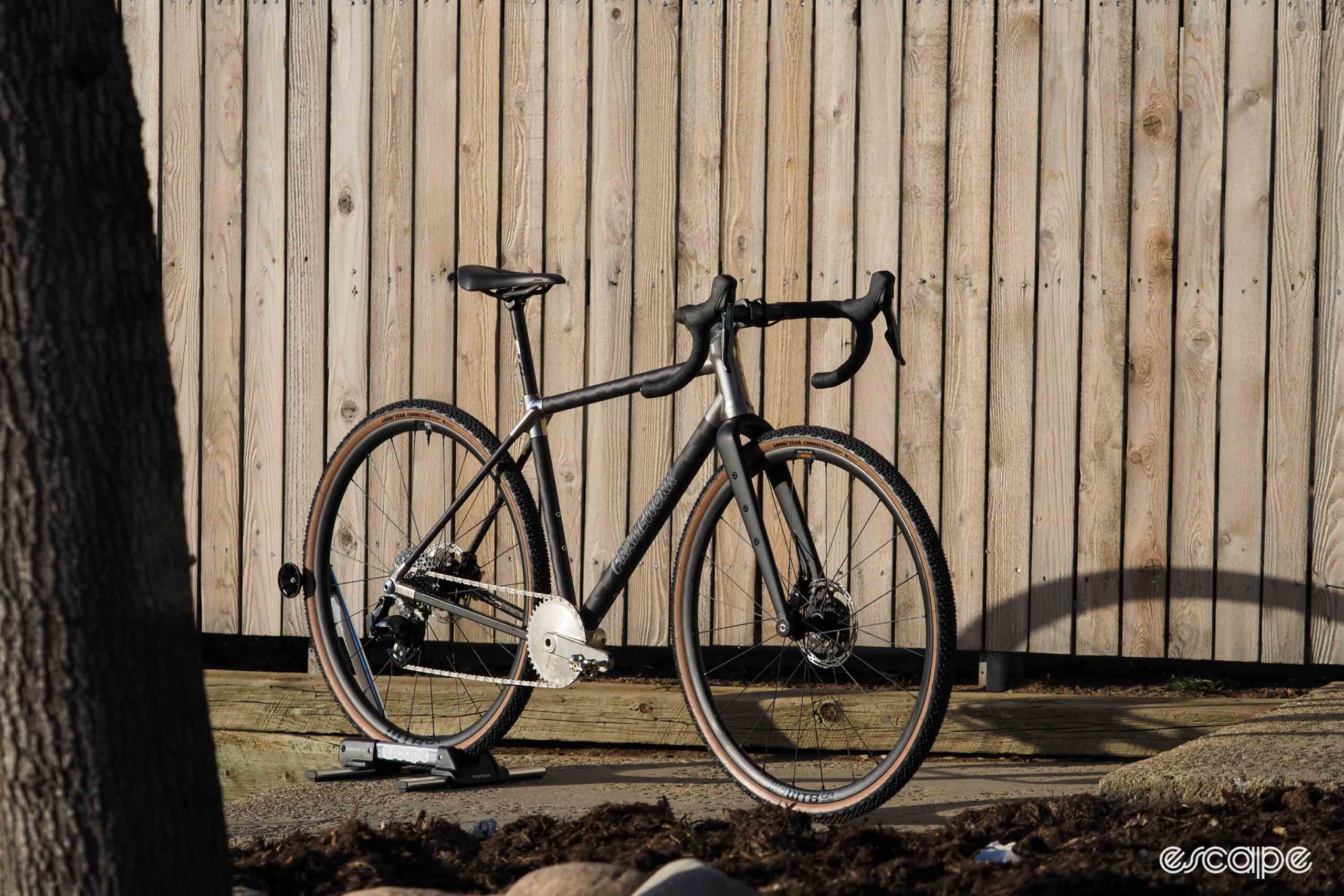
Atherton, Bastion, and Stein & Fenton build with carbon fiber tubes bonded to 3D-printed titanium lugs, while Seven, No. 22, and Zukas also use bonded carbon tubes, but with TIG-welded titanium lugs (Zukas also offers similar construction with steel lugs).
Framework’s frames also feature carbon fiber tubes bonded to metal lugs, but instead of being 3D-printed or TIG-welded titanium or steel, they’re CNC-machined from solid 7075-T6 aluminum billet. Each frame is custom designed using a parametric CAD model that Kennedy developed – there are no stock sizes – and the lugs are machined in-house. The filament-wound carbon fiber tubes are also made in-house – on a machine that Kennedy designed and built himself, and using aluminum molds he cut. Picking up on a theme here? Save for the nickel plating applied to the lugs for corrosion protection, every aspect of Framework’s production is done under one roof by a single person. The machining, the winding, the molding, the clear-coating, the assembly. Heck, even the graphics on the down tube.
Why CNC-machining, you ask? According to Kennedy, the answer is simple: precision. Kennedy says CNC-machining is the best way to get the ultra-tight dimensional tolerances he wants and without the heat-affected warping that can come with TIG-welding or the potentially inconsistent grain structures he says can be associated with 3D-printed parts.

There’s also an element of pragmatism here. Kennedy already had the CNC machines from his main work as a tool and die maker, and was also already writing his own code. Prototype frames were assembled with off-the-shelf tubing, but after spending what he felt was too much money buying from established suppliers, he decided he could instead build his own filament winding setup and save money by purchasing all the raw materials instead. The surface finish of the tubes straight out of the aluminum molds is impeccably smooth, and while it may seem like the lugs are polished, they’re not. That’s just how they come out of the machine (I snapped one off of its base plate myself), and the nickel plating used to keep corrosion at bay only adds to the shine.
When everything is all bonded up, what results is a sort of throwback-looking thing what with its shiny metal nodes and clear-finish, round-profile carbon fiber tubes – a stark departure against the backdrop of conventionally molded carbon fiber frames that dominate the scene. But while to some the Framework may aesthetically look like it came out of yesteryear, it’d be more accurate to think of it more like a restomod. Those traditional aesthetics aren’t by intention – Kennedy says it’s purely the result of his preferred construction methods – and both the materials used and the way he’s building his frames could hardly be more modern.

Some of the frame features may come off as a bit controversial, but there are sound arguments behind them.
Threaded bottom brackets – be they BSA or T47 – are very clearly coming back after years of backlash against press-fit. But on the Framework, the bottom bracket bearings press directly into the shell with no additional parts required: no separate cups, no circlips, no snap rings. Framework machines its own aluminum crankset to match with a 30 mm spindle, rectangular-section arms with full-length rifling to decrease weight (similar to what Rotor has done for years), and a striking narrow-wide chainring. No worries if you don’t want the Framework crank, either: even though the bearings press directly into the shell, they’re located in exactly the same positions in space as they would be with BB386EVO, meaning just about anything will fit with the correct cartridges installed.
More unusually, the headset bearings also press into the frame, and instead of basing the system around existing parts from FSA, Cane Creek, or another established OEM headset supplier, Framework machines its own headset parts for what Kennedy believes is a far superior finished assembly. There’s a ton of surface contact between the upper headset and steerer tube, and the upper bearing is firmly captured to essentially eliminate the chance of unwanted movement. All of the edges are also rounded to protect the steerer and brake lines, the internal ports are generously sized for easier assembly, and the profiling is perfectly matched to suit either FSA, Deda, or Enve stems.
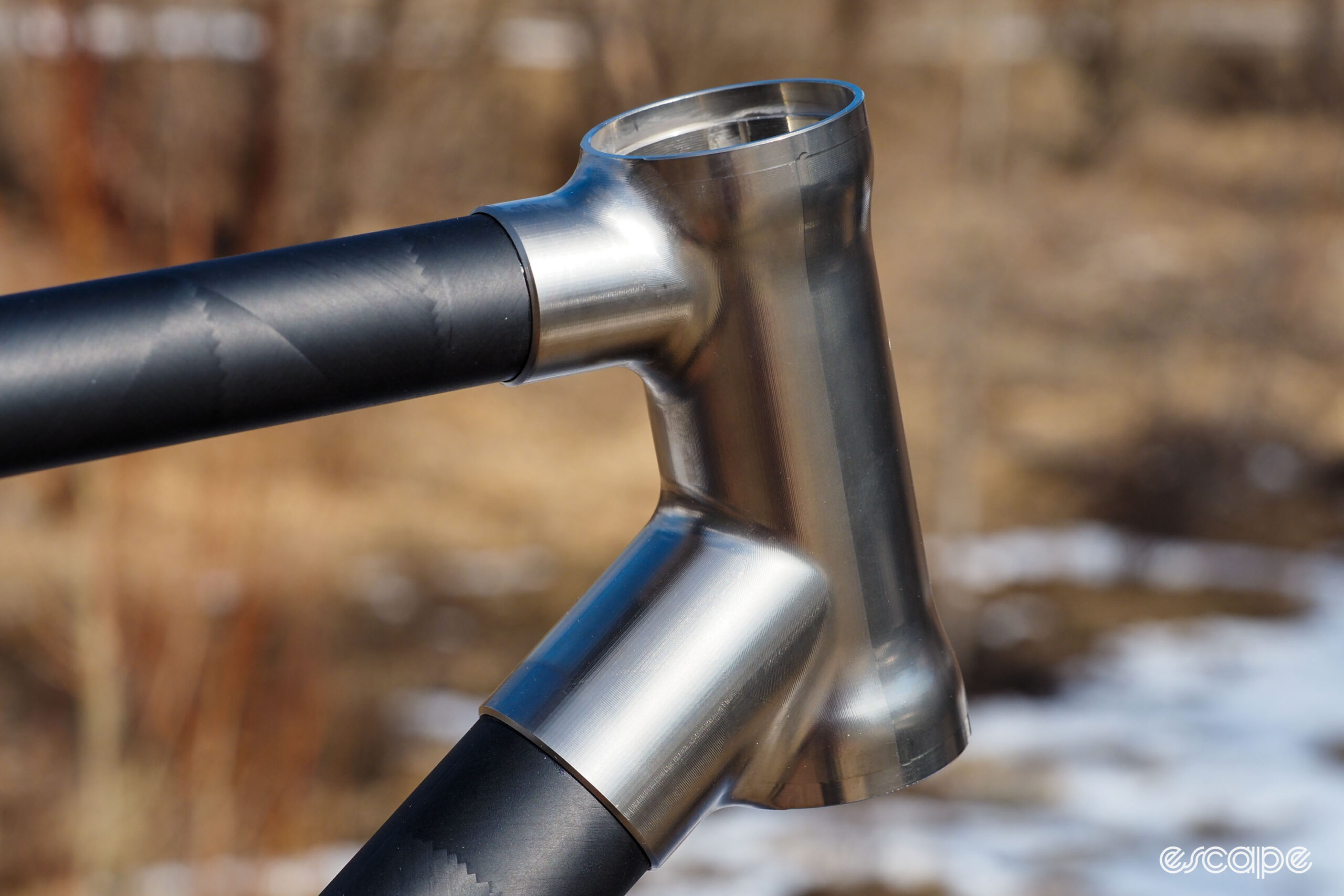
But why press-fit at all when there’s so much hate around it? In Framework’s defense, the core issue with press-fit has never been with the concept itself, but rather the crummy execution that has yielded all sorts of issues like creaking and premature bearing wear. Kennedy argues – rightfully so, in fact – that press-fit is the standard in any other industry for a spindle rotating on cartridge bearings, and because all of the bearing bores are exactly as they should be, it’s not an issue here.
Framework doesn’t bother with a hidden wedge-type seatpost binder – hallelujah! – but instead of using a separate collar, the binder is integrated directly into the seat lug itself and the threads aren’t easily replaceable. Kennedy says the bolt can be torqued to 12 Nm “without flinching,” though, and the seatpost is more likely to be crushed first, anyway.
The build
Building up my Framework test frame was eye-opening, and an immediate indicator of the sort of precision Kennedy was talking about. Everything was not only exactly as it should have been, but also a refreshing change from what I see all too often from mainstream brands across the board.
Frame alignment was dead-on from tip to tail. The bottom bracket and headset bearings pressed in exactly as they should into amply reinforced bores that are sized so precisely that Kennedy says he’s resisted using anodized finishes because of how that process can unpredictably alter the part tolerances. Those bores are also so perfectly oriented in space that the crankset and fork both spin noticeably better than usual, even with regular Enduro stainless cartridge bearings. The gap between the machined-in-house one-piece headset assembly and the top of the head tube was so consistent that you can only just barely slide a piece of paper in there all the way around.
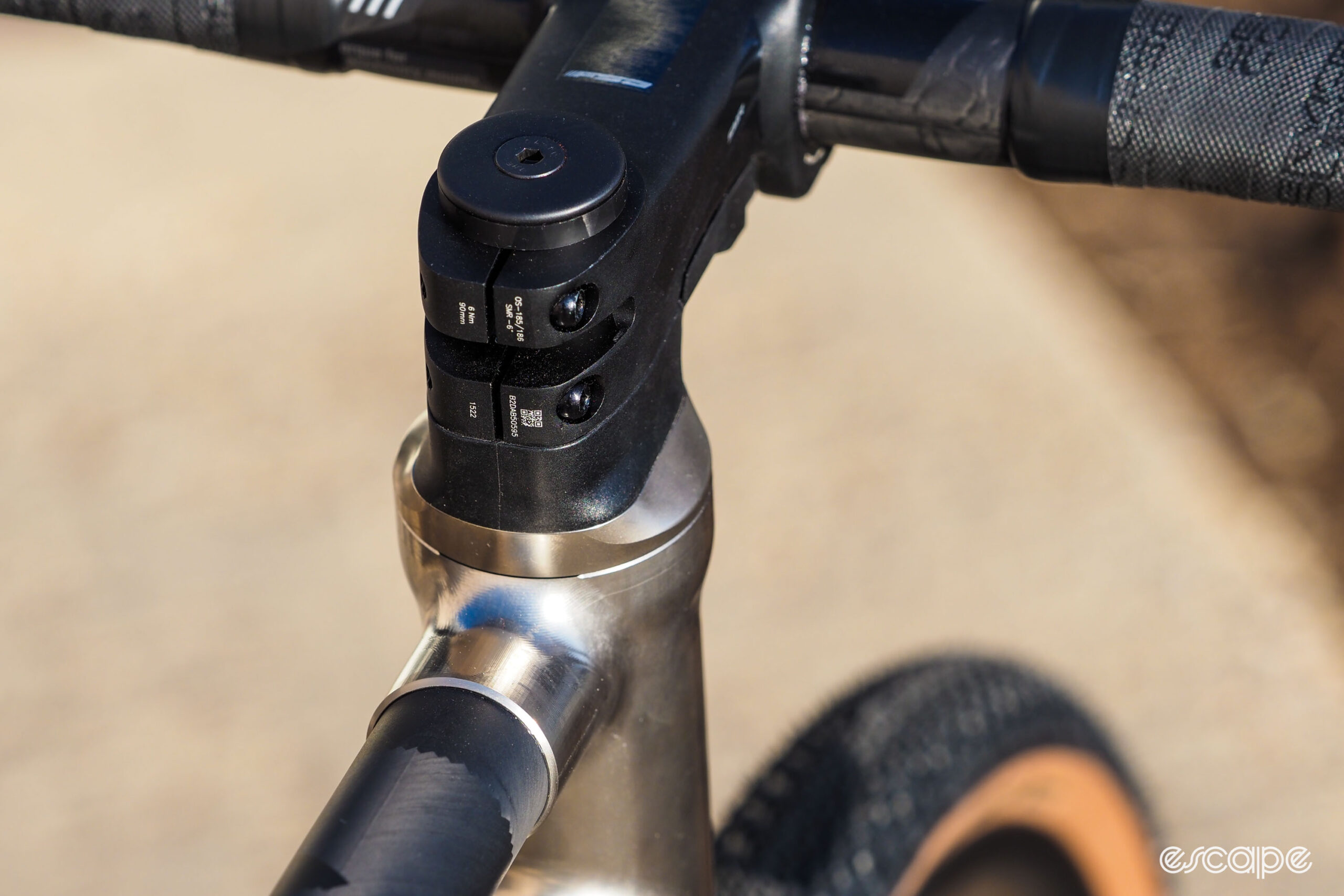
Even the fully internal cable routing was a comparative joy to set up – no small praise from this self-professed hater of the concept. I went with the FSA system for the wider selection of stem models and routing options, and although the brake hoses still go up through the upper headset bearing, I was able to run them externally from there. Feeding the rear brake hose from the chainstay up out of the head tube was a cinch given the complete lack of internal impediments and the smooth profiles throughout (not to mention the lack of grossly excessive cured glue as confirmed with an endoscope). Framework’s headset assembly also offers plenty of room and nicely rounded edges to easily route the lines, as well an unusually generous amount of surface contact with the steerer to prevent the dreaded “ring of death.”
Up top, the seat tube bore is so spot-on that you suddenly become more aware of how carbon fiber seatposts can sometimes vary in how much clear coat is applied, while the flat-mount brake tabs are so perfectly square that setting up the caliper position genuinely took seconds to run rub-free.
It’s a level of precision that most seasoned shop mechanics have likely never encountered in their careers, but wishes was present on every bike clamped in their repair stands.
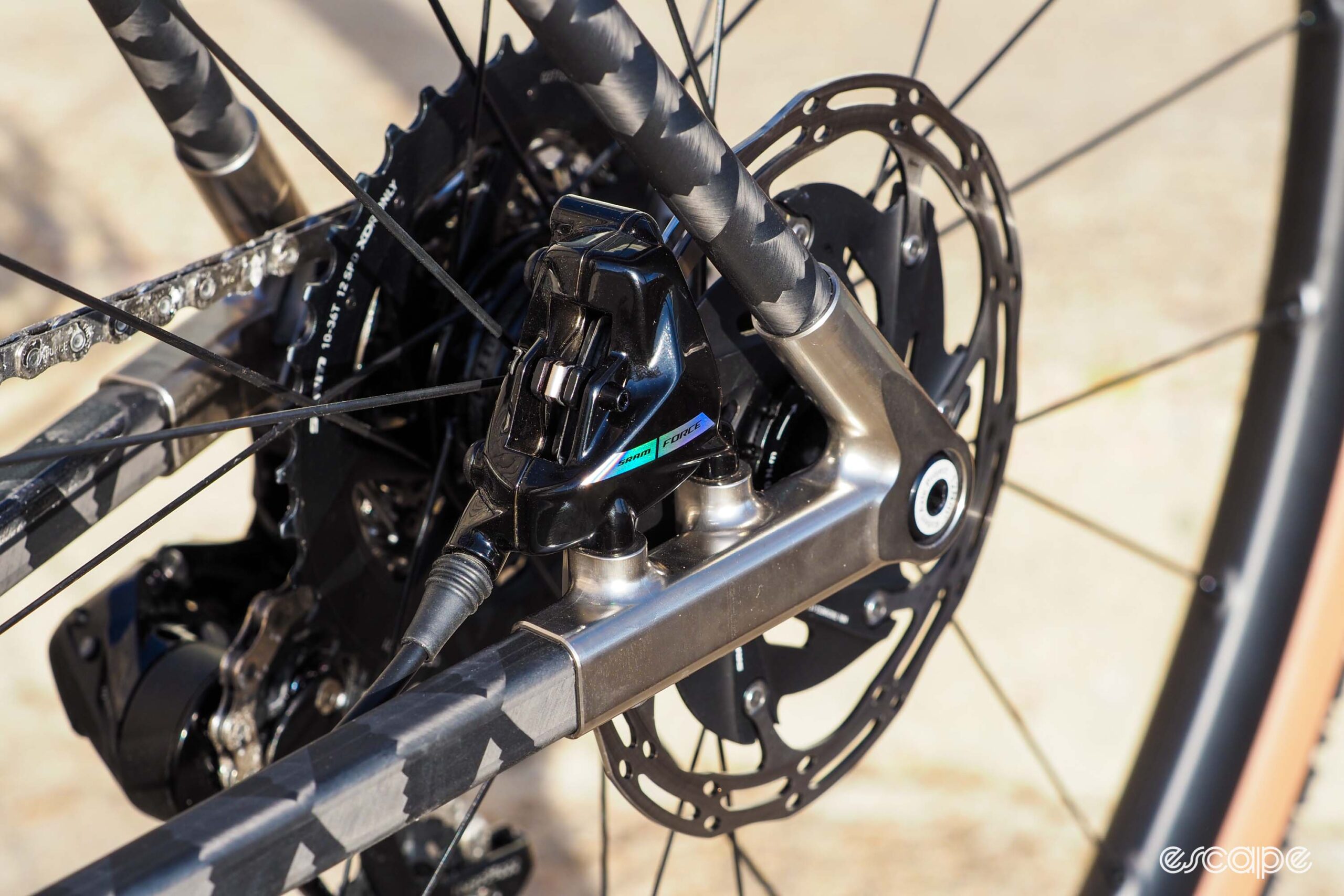
As for the weight, the Framework isn’t going to knock anyone’s socks off, and Kennedy is fully aware of that. Given the aluminum lugs, one of his frames will never challenge something like a Specialized Aethos, Giant TCR Advanced SL, or Trek Emonda SLR. Nevertheless, the 1,296 g actual weight for my test gravel frame (roughly equivalent to a conventional 52 cm) isn’t bad considering you can also knock a few grams off for the direct press-fit bottom bracket and headset bearings, not to mention the intentionally thicker tubing that should be much more impact-tolerant than what you usually see in ultralight models.
I intentionally went about as standard as I could with my test sample in an effort to get a sort of middle-of-the-road assessment of what Framework is/was all about. Kennedy was still only using round tubes throughout when we got this frame going (more on this in a bit), and while he can produce differential fiber lay-ups for more directional stiffness (more on this later, too), I went with his more common radially symmetrical tubes. I provided Kennedy with a proposed geometry and desired tire clearance, my body weight and position, a rough idea of what I thought wanted in terms of stiffness, and some specifics about bottle mount positions – and then I let him handle the rest.
After a little bit of back and forth, we settled on final numbers, and then Kennedy produced a finished frame within just a few weeks.
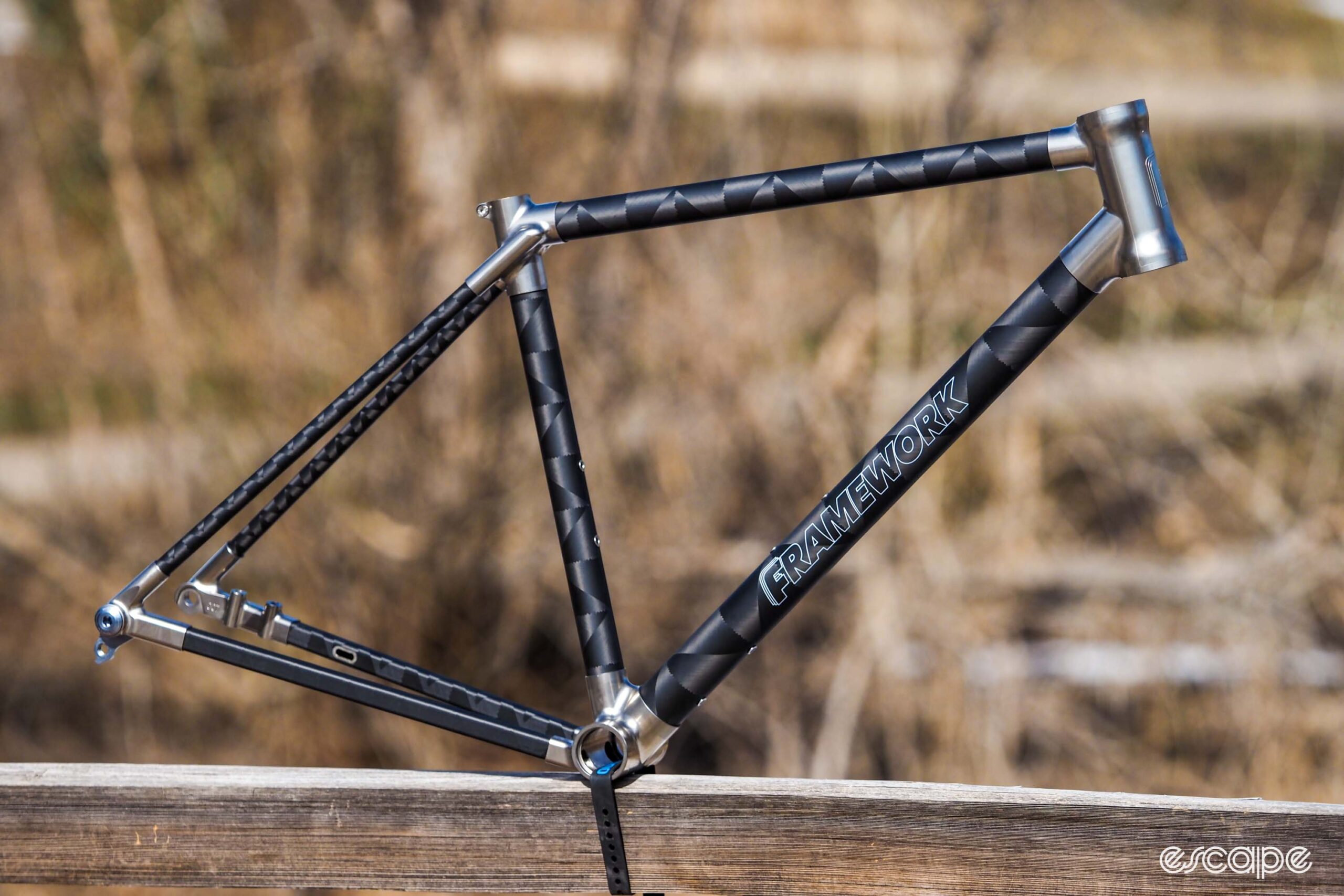
Built up with a SRAM Force AXS XPLR groupset, Framework’s own machined-in-house aluminum crankset, WTB CZR i23 carbon wheels, 40 mm-wide Goodyear Connector Ultimate gravel tires, FSA aluminum and carbon fiber finishing kit, and a Fizik Vento Argo 00 saddle, my sample came out to 8.45 kg (18.63 lb) without pedals or accessories.
Framesets are priced at US$7,750, including a fully custom frame, a full-carbon fork (from either Enve or Speeder, depending on desired features), a headset, a choice of cockpit, and bottom bracket bearings.
Perfection in build quality, but what about perfection in the saddle?
Reviewing a custom bike is an inherently flawed process when there’s such a wide range of possibilities on tap in terms of what gets delivered. After all, what I rode may not perform or feel the same as what someone else might request. Someone else’s feedback might also be different from mine. It was immediately apparent that the Framework was an absolute superstar in terms of how well it’s made. But does that meticulous level of care in how it’s manufactured translate to amazing performance out on the road or trail?
The answer to that question is hard to parse.
Let’s get the obvious part out of the way first: beauty is in the eye of the beholder and all that, but man, do I find this thing to be arrestingly pretty: The super-polished finish on the lugs, the durable nickel plating, and the simple elegance of how the lugs are shaped. That hyper-defined weave pattern on the carbon fiber tubes. The classic silhouette. Heck, even I can almost get behind fully hidden routing when it’s executed like this. And while some may find the function-over-form styling of Framework’s own machined aluminum crankset to perhaps be a little too industrial-looking, I personally find it to be icing on the cake. It just seems right.
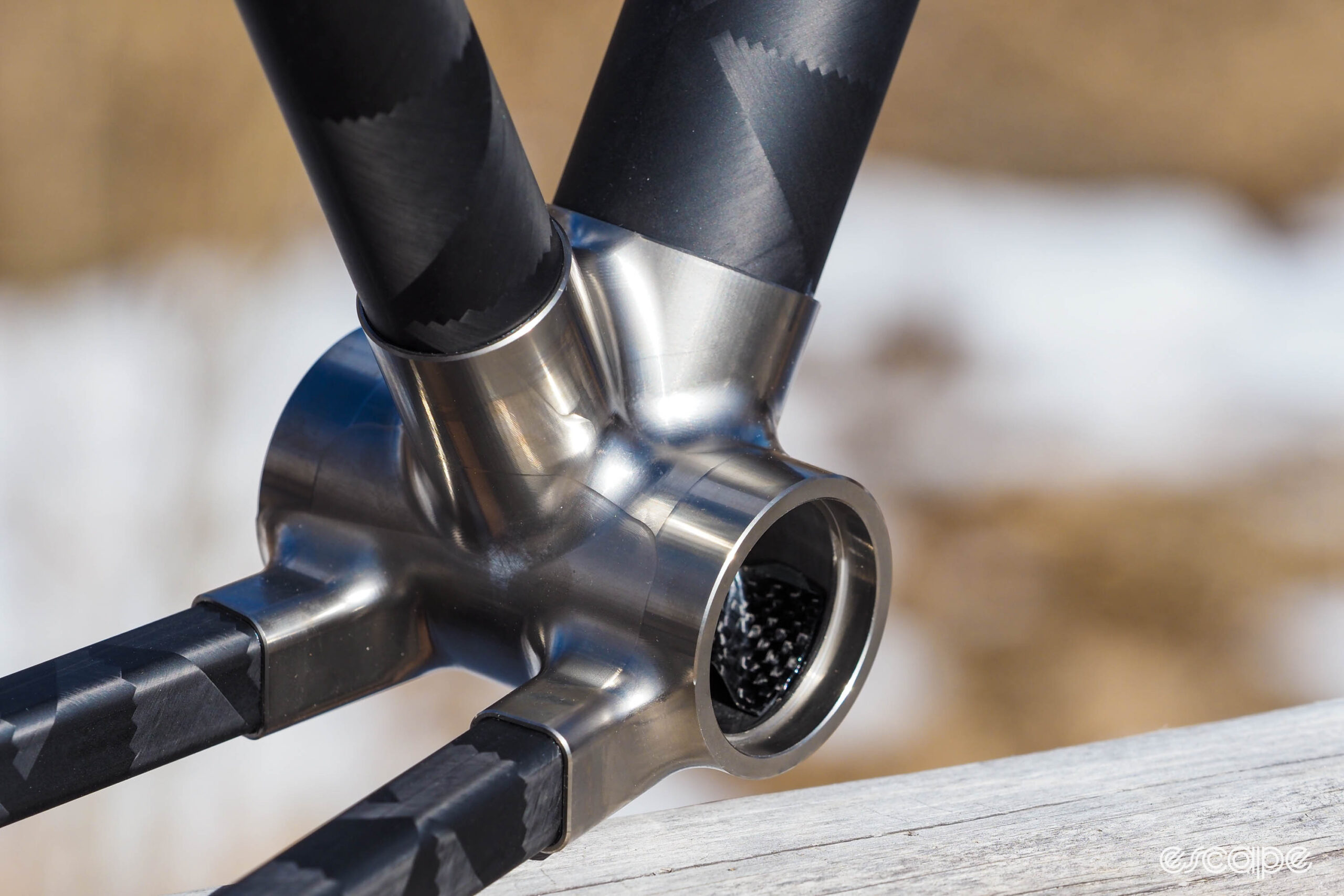
I’m a big fan of progressive geometry for gravel bikes, and my Framework tester was thankfully exactly what I’d hoped it’d be. Built around a stubby 80 mm stem with a long front center, slack head tube angle, and only a modest amount of stack height, it’s been an absolute joy to tear around my local terrain. Traction is hard to come by here – it’s all kitty litter-over-hardpack – and my typical gravel rides are often interspersed with more than a little bit of underbiking. The longer front end and more rearward weight bias I requested is more forgiving of diving into loose corners and dropping down off of small, rocky ledges, and there’s less of a sense I might get pitched over the bars on steeper descents that connect smoother sections of dirt. It recalls to some extent the thrill of my cyclocross-racing days, but on a bigger course with more variable conditions (and less of that metallic taste in my mouth).
Also well-suited to my preferred style of gravel riding is the sense of sturdiness that I picked up in my test frame. While some carbon bikes can feel fragile and tinny out on the road, the Framework is anything but. Dive into a rocky descent and there’s no twanginess or vagueness as you drive the front wheel through a corner. Likewise, that springback you can sometimes get on lighter carbon frames when hitting bumps isn’t here, either; just plow through and hope the wheels and tires are up to the challenge.
Granted, part of that may be due to the more adventure-focused carbon fork Framework supplied with the frame (it came from Chinese manufacturer Speeder Cycling), but I don’t think that’s the case.
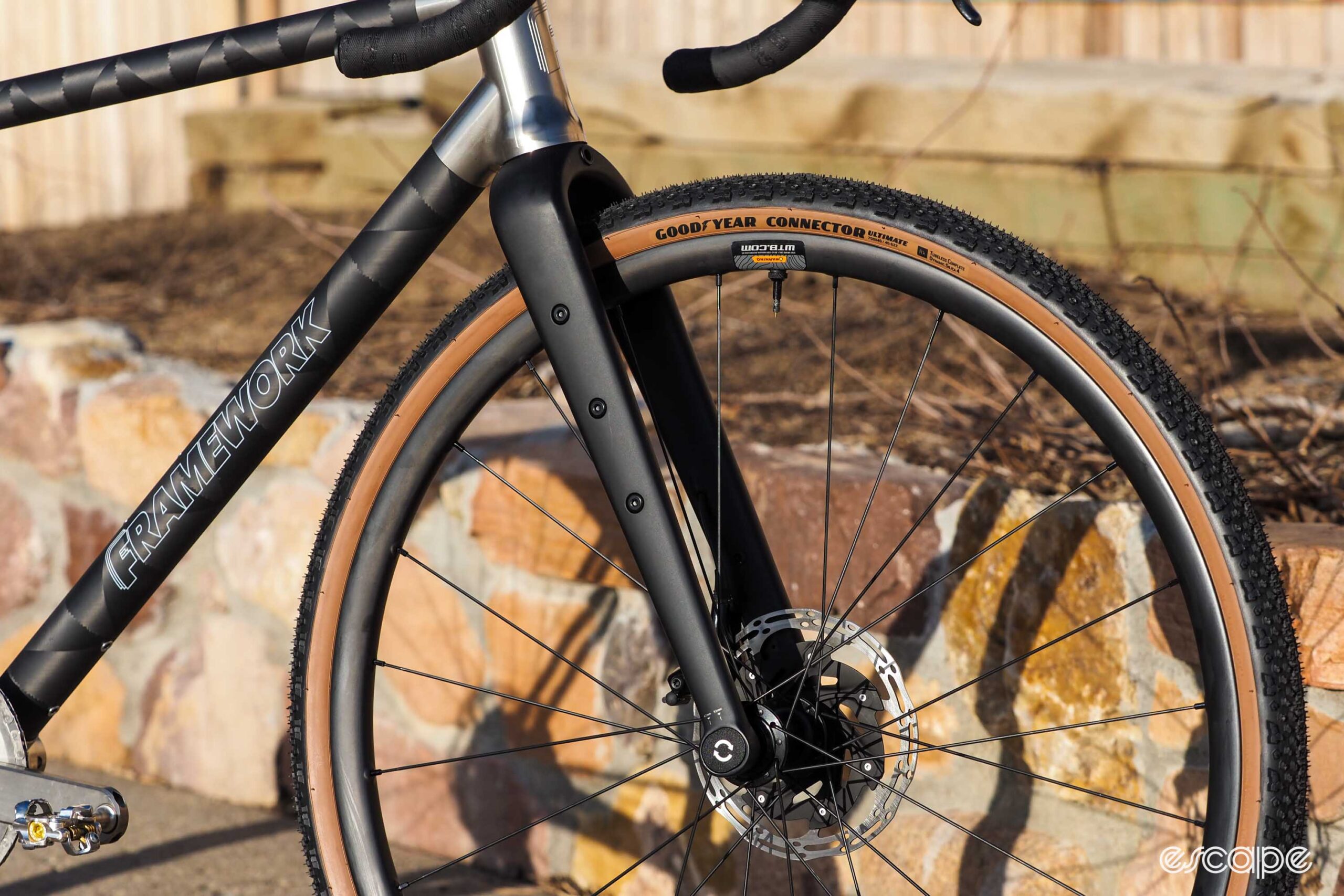
The wall thicknesses of conventional modular monocoque high-end carbon frames typically run from as much as 2.0 mm to less than 1 mm, with those thinner sections – usually in the middle – sometimes being so notably easy to deform that they come with warnings not to sit on the top tube (and don’t even think about clamping a tube in a repair stand). In contrast, there is absolutely zero squishiness to speak of here.
If you squeeze any of the tubes with your hands, basically nothing happens. In fact, Kennedy says you can safely clamp a Framework tube in a stand (within reason, of course) despite using 1-1.5 mm wall thicknesses throughout, and his Instagram account is littered with videos of him subjecting test tubes to all manner of abuse with seemingly no ill effects.
Going along with that sense of solidity, I quickly got over any fears of moderate impact damage. Instead of cringing at that telltale sound of rocks getting kicked up by the front wheel and smacking into the underside of a lightweight down tube, the Framework laughs them off with a dull thud and no visible evidence whatsoever aside from the occasional nick in the clearcoat. Perhaps aiding further in that respect is the comparatively small down tube on my tester and its round profile. Just based on geometry alone, flying rocks are more likely to hit the down tube at a glancing angle instead of smashing straight into a flat face, sort of like how the blast of an embedded IED is more likely to be deflected off the V-shaped hull of an American MRAP armored vehicle than the flat bottom of an older Hummer.
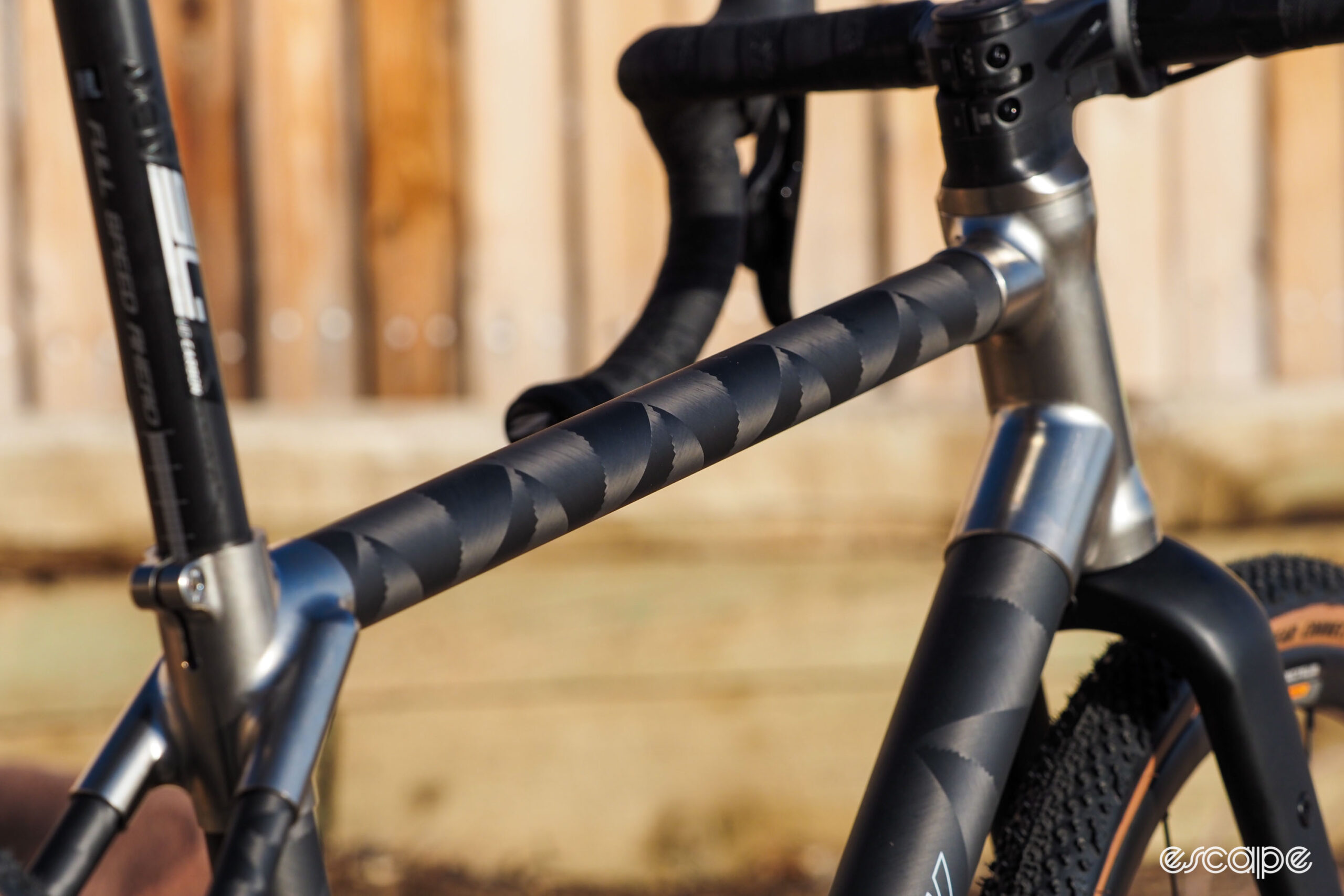
Kennedy’s preference for a more dramatically sloping top tube and more exposed seatpost yields dividends in terms of rear-end ride quality, too. Despite lots of efforts across the industry to increase compliance in the frame itself, the fact of the matter is that the seatpost offers the easiest gains by far, particularly on smaller frames with inherently stiffer rear triangles like what I’ve been riding. The tubing also serves up a remarkable amount of damping, which further helps to squelch high-frequency buzziness in general.
That all said, there is a flip side to this coin.
That remarkable solidity – like you could ride it straight into a wall with no ill effects – may confer an incredible amount of confidence in demanding situations, but between that and the high amount of damping provided by the filament-wound tubes, the Framework is a little lacking in the springiness and liveliness departments. That “zing” I’ve come to really enjoy in lighter-weight frames isn’t there as much as I’d like, and in certain situations, that front-end solidity can also translate into an overly firm ride.
At the same time, it’s important not to conflate solidity with stiffness. While the Framework has the former in spades, it’s hard to get around the relatively small proportions. Take the down tube, for example. Kennedy built my test frame with the largest diameter he offered at the time, but it was still just 45 mm around. In comparison, the down tube on a Specialized Diverge STR is 70 mm wide and 60 mm tall. Likewise, the top tube on my Framework sample is just 32 mm in diameter while that Diverge top tube is 53 mm wide (but only slightly taller at 35 mm given the more dramatically ovalized shape). Keep in mind, too, that bending stiffness of tube increases exponentially with radius.
I wouldn’t say this Framework is soft per se, but it’s also just not as responsive under power as I would prefer.
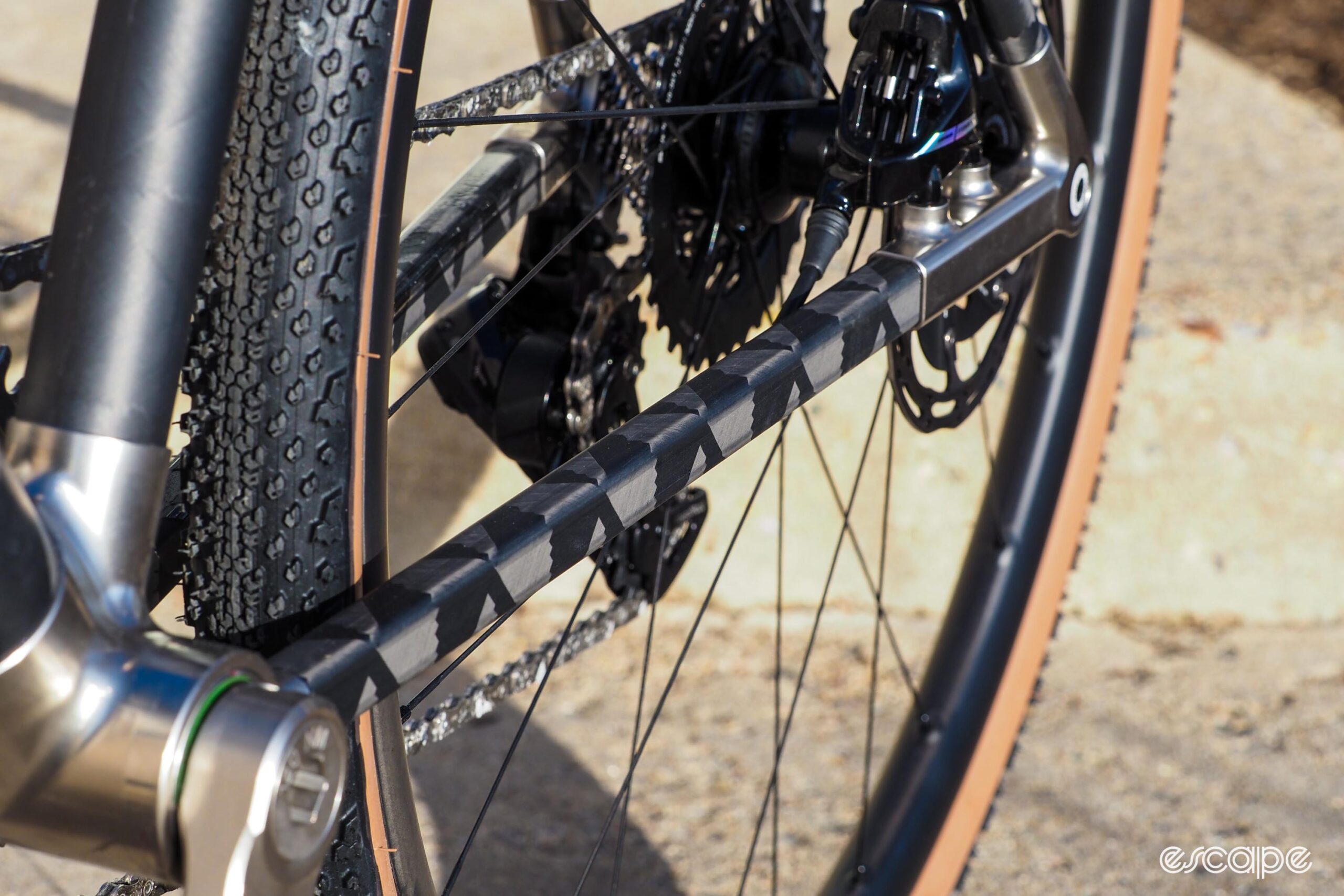
There’s been no shortage of jest aimed at the whole “laterally stiff but vertically compliant” mantra the industry (media included) likes to toss about. Hell, I even have my own personalized entry in the Velominati’s so-called “Rules,” but it exists because it’s true. Bikes that are very stiff laterally and in torsion typically come off as super eager and spritely when you give it the beans. Generally speaking, those sorts of rigidity are considered good things in terms of transferring power, and a frame that’s more flexible up and down is less likely to beat the crap out of you when riding on rougher ground.
Round tubes are incredible from the standpoint of structural efficiency, but there are reasons even more classically proportioned modern bikes like the Specialized Aethos make liberal use of directional shaping. A round-tubed carbon fiber composite tube can absolutely be built with a tuned lay-up schedule such that it’s stiff in one plane but more flexible in another, but altering the shape is still a more-direct way of achieving that goal.
Granted, this Framework was built with the “7 out of 10” stiffness parameters I provided to Kennedy, and I also didn’t request any sort of custom directional stiffness tuning, both of which leaves a fair bit of latitude for tuning. Kennedy also says that filament-wound tubes tend to be stiffer than conventionally made pre-preg ones for a given dimension. In my defense, I didn’t know such directional tuning was available, nor did Kennedy tell me he offered such a thing at the time, although keep in mind this review process originally started more than a year ago (the frame pictured is actually the second one he built for me as he wanted me to be on a newer version with his latest processes and SRAM’s Universal Derailleur Hanger out back).

As much as there’s already generous wiggle room for altering the frame’s stiffness and flex profiles, the nature of Framework’s processes also allows Kennedy to iterate incredibly quickly for even more design flexibility. He and I discussed the pros and cons of round vs. shaped tubing after I sent him my feedback, for example, and barely a week went by before he had an updated CAD drawing built around a much wider elliptical-profile down tube and a more dramatically flattened top tube. Even better, he had a set of aluminum lugs in hand to match a few hours later, and then carbon fiber tubes to match shortly afterward – all still made completely in-house, including the molds for the tubes. Kennedy told me the tubes still need to feature a constant cross-section at the ends for proper bonding with the lugs, but aside from that – and cost – just about anything is technically feasible.
“The elliptical down tube as compared to round, the theoretical/back-of-the-envelope math works out to 81% of the bending stiffness in-plane and 127% of bending stiffness out-of-plane,” Kennedy told me. “The top tube is closer to 50% the stiffness in plane and 150% out of plane. From there I can still do preferential layups for differing stiffness in and out of plane as well as butting for differing axial bending properties.
“[There are] no limitations on what we can mold, but for accurate and well-executed joints it’s preferable to keep straight profiles in the joints,” he continued. “By changing layups, butting, and wall thickness we can get differential bending without resorting to dedicated molds for every frame size (and thereby forgoing custom geometry). The purpose of building the bikes the way I do is to maximize flexibility while offering custom geometry. Building dedicated shaped tooling for every frame size is well within my capability, but the budget to make everything is silly for how little control you have over the final product once the tools are cut.”
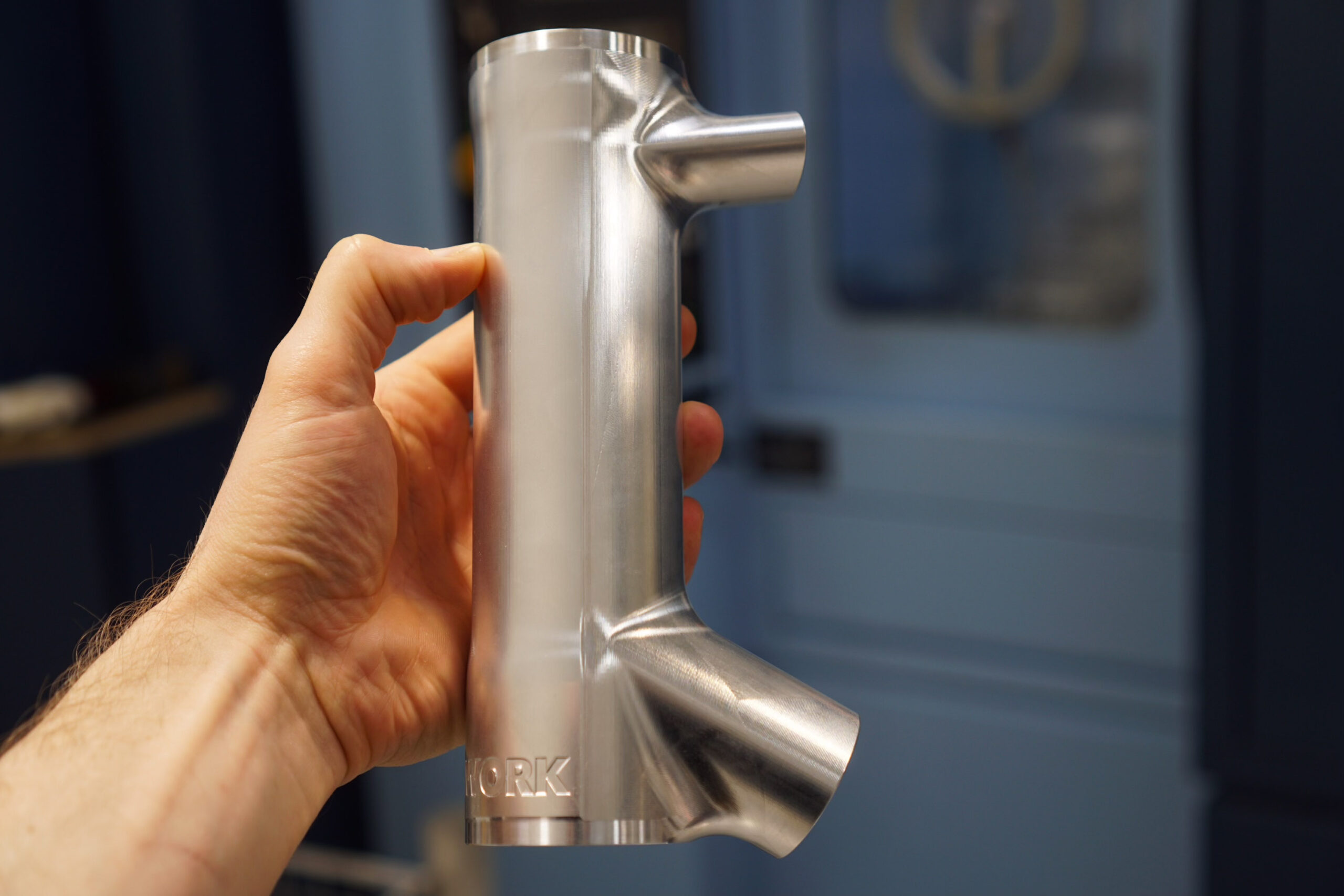
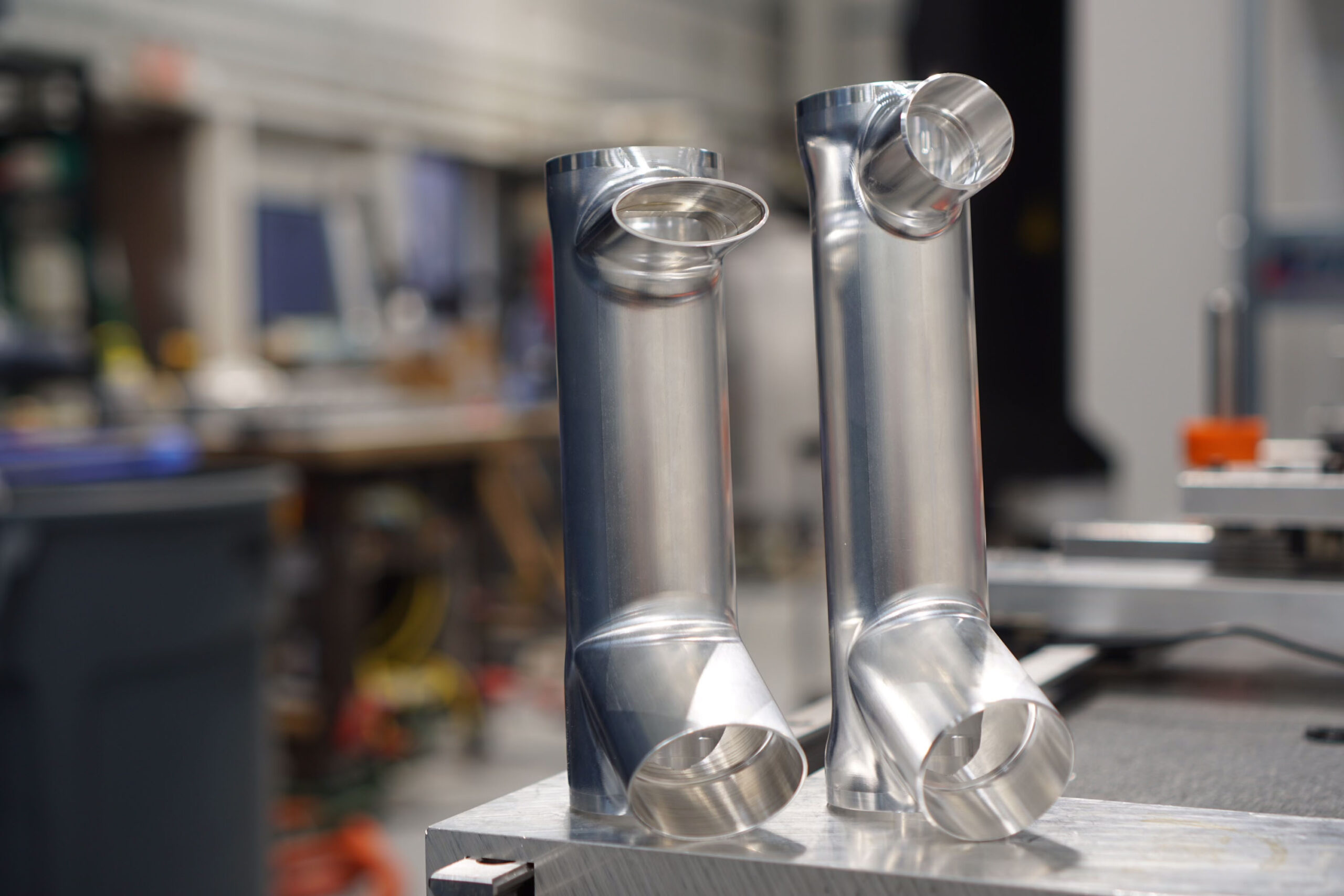
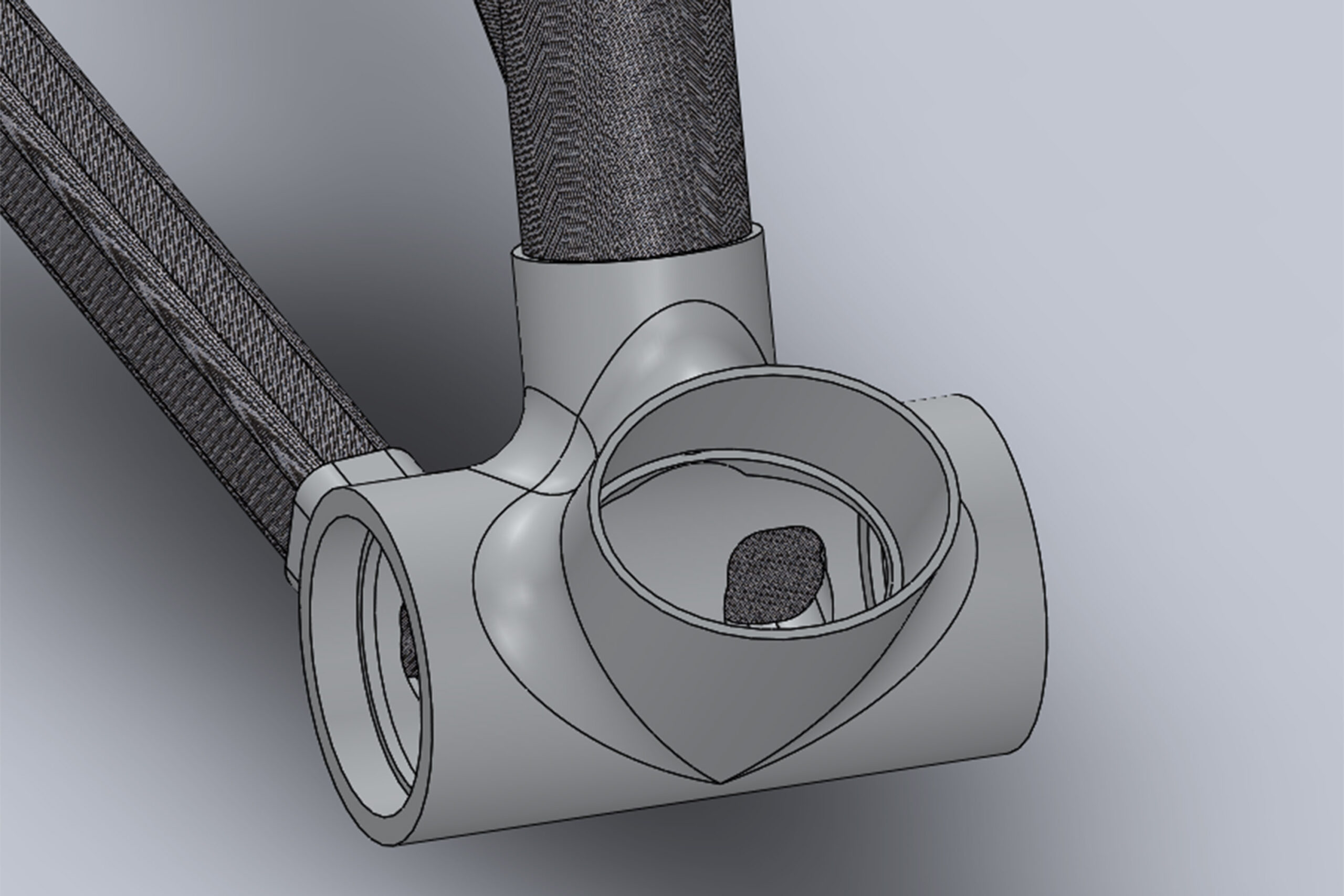
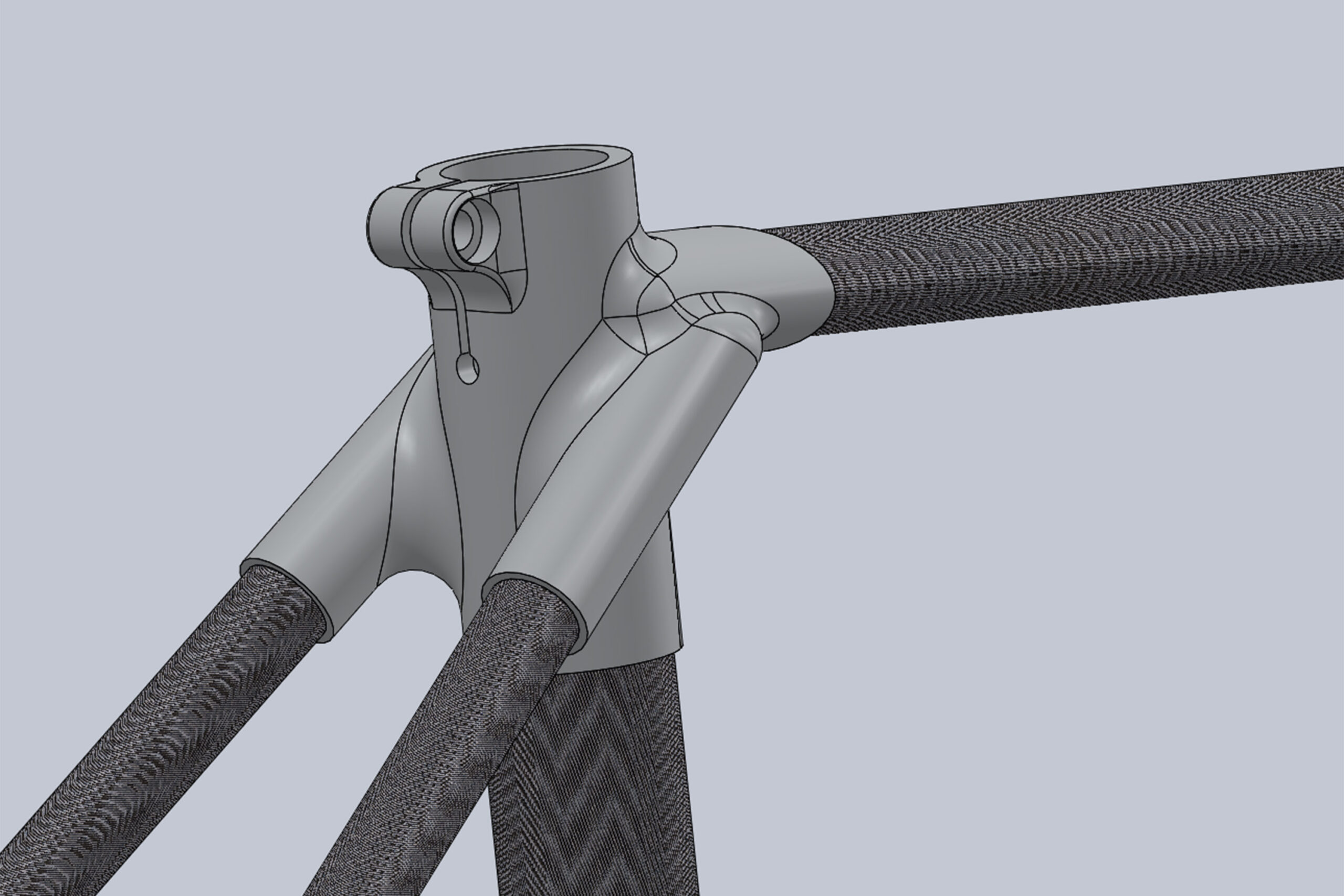

Like I said: it’s complicated
Particularly after having seen Framework’s operations firsthand and having had many (many!) long discussions with Kennedy about his philosophy and approach to the whole thing, I’ve zero doubt that the frames are exceedingly well built – perhaps the best-built of anything I’ve had my hands on in terms of precision, and I don’t say that lightly.
Kennedy offered to build a third frame with these latest changes, but I had to draw the line somewhere (plus, I wasn’t entirely comfortable with a one-person outfit of modest means spending yet more of their own money to build another frame just for this review).
Let’s say I took him up on his offer, though. Knowing what I know now about what he’s capable of producing – and about bikes I’ve really liked over the years – I’d certainly have it built with the new elliptical down tube and top tube. I’d probably ask for extra lateral and torsional stiffness in the former, and a little extra flex in the vertical plane for both the top tube and seat tube. I’d likely request that the chainstays be beefed up, too.
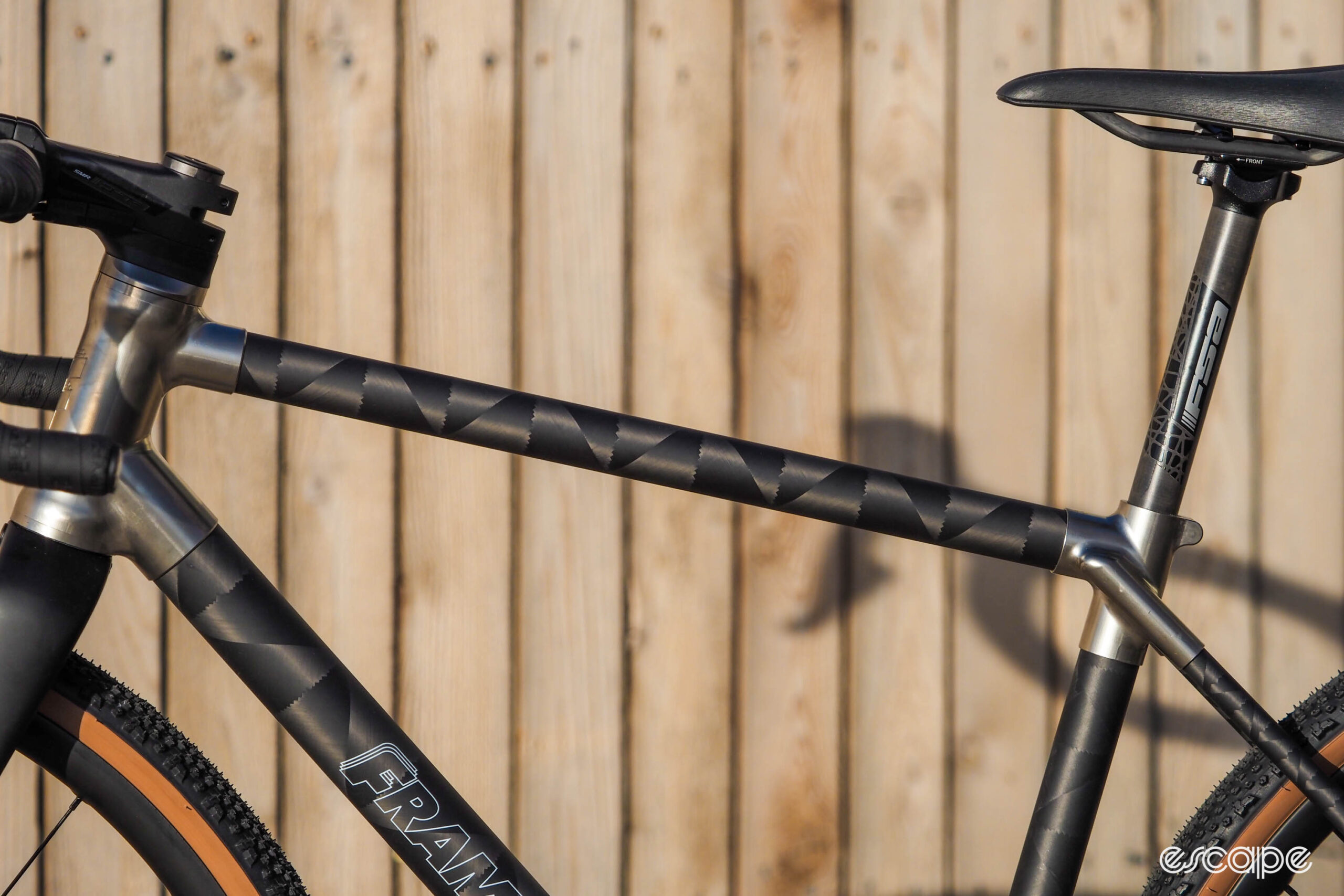
But even if Kennedy built that third frame, would it actually move things in the direction I wanted? In all likelihood, I’d find it stiffer under power and comfier over bumps. But would it be stiff and comfy enough? Or might it actually be too stiff (such a thing is possible) at the bottom bracket and/or too soft vertically? Or maybe it’d just feel … weird?
I can’t say, but neither can Kennedy – at least not definitively. He does a lot of FEA testing, but he only has two or three dozen bikes in the field on which to draw feedback and has only been building for less than two years. He also hasn’t conducted the sort of exhaustive iterative experimenting and stiffness testing that bigger brands use to guide them in deciding how stiff or flexible certain parts of a frame should be (although such a thing admittedly isn’t exactly financially feasible for an outfit of his size, either).
As confident as I am in his ability to produce an incredibly well-made frame, the fuzzy math of bicycle ride quality is less clear-cut, and without a lengthy track record of frames under his belt to call upon, it’s not exactly a sure thing. I’m nevertheless convinced Kennedy is much further ahead in that respect that most would be in his position, and I think he’s severely underselling himself when he says, “I don’t think the bikes are perfect, but I think they are good.”
“Good”? Come on, Jonathan; give yourself some credit here.

Such is the quandary of the vast majority of small-volume, custom frame builders, though, no? How do you know that you’re going to get exactly what you want? Oftentimes, you just don’t.
To some extent, it’s a matter of faith.
So was this particular example everything I’d hoped it’d be? In some respects, yes, but in others, maybe not quite. But I also don’t think it was far off, and I’m confident Framework is capable of producing something that I’d find satisfying for a lifetime.
Hopes and fears
Product reviewers are supposed to be totally impartial in theory, but reality tells us differently, and I will freely admit here that I’m a fan of what Kennedy is trying to do here with Framework. The old bicycle mechanic in me is incredibly appreciative of how well-constructed the frame is, and my engineering education – I never practiced, to be clear – is in absolute awe of the work it took to get there (see what I did there???).
Kennedy really doesn’t want Framework to be viewed as “retro.” In fact, he seems to bristle at the mere mention of the word since it’s so anathema to what actually goes into it. But where the brand goes from here is impossible to predict at this early stage, and it’s probably a small subset of prospective clients that’ll perfectly fit inside the Venn diagram of Framework attributes.
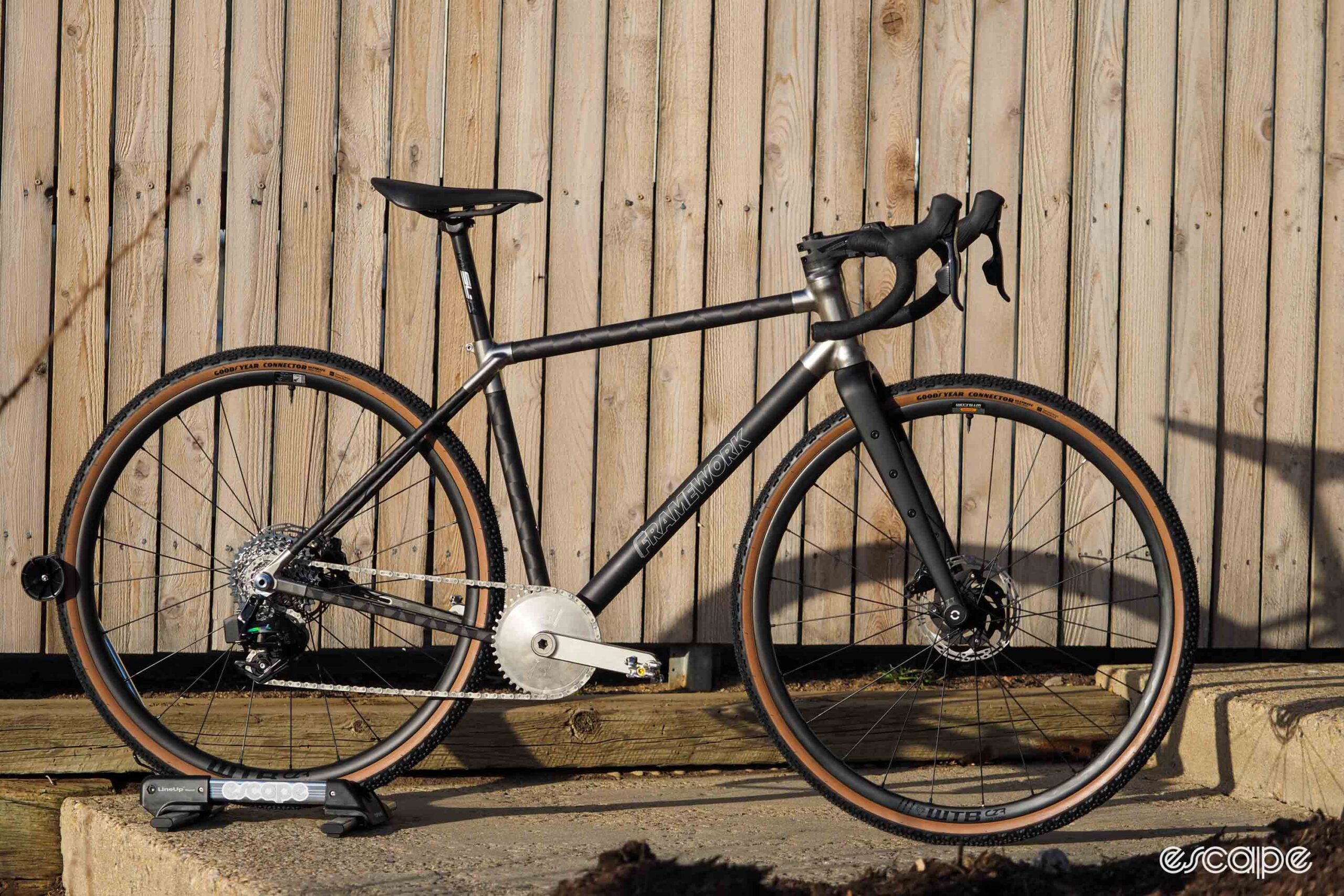
Long-term, I see Framework’s future as perhaps being akin to what Singer Vehicle Design has done in the automotive world. That tiny American brand takes older Porsche 911s – like, decades old – and “re-imagines” them with cutting-edge modern hardware: engines, transmissions, suspension, interiors, completely updated bodies, you name it. It’s the sort of distinctive styling that draws a discerning clientele who’s tired of seeing too many other newer 911s out on the road, but knows their Singer sleeper will nonetheless wipe the floor with the unsuspecting masses who don’t know what it really is. They’re expensive and beautiful and amazing and exclusive – and damn, would I love to have one.
Veteran automotive journalist Chris Harris wrote this about the Singer back in 2013:
“The Singer-modified 911 is not a machine you simply climb aboard and drive. It starts like a normal car, using a key, but before you twist that little stub of plastic, you will have played with the clacking door handle. Once snuggled into the bespoke, cross-woven Recaro bucket, you’ll need 10 minutes to prod and marvel at this interpretation of a classic Porsche cabin. It’s quaint coziness peppered with clever allusions to the past, but set in modern materials
with modern amenities.
“The worry with this, as with so many customized cars, was that the driving experience wouldn’t support the static object. It takes about three minutes to dispel those fears. This is a very fast car, and yet the manner of its performance is even more memorable than the outright thrust. Push those floor-hinged pedals into the carpet, reach forward to the short gear lever (Singer has worked magic, transforming the 964’s linkage from good to amazing), and grip the Momo Prototipo wheel like you’re McQueen in the opening frames of Le Mans – this is the type of machine that appeals to people obsessed with cars. It draws you into the narrative of its creation and lets you create your own reality from inside – a fantasy ride shaped like a flattened Volkswagen Beetle.”
Kennedy doesn’t want Framework to be “retro,” and my guess is Singer doesn’t want to be seen that way, either.
How about timeless, eh? Yeah, let’s go with that.
Seriously, Framework, I’m rooting for you over here. Bonne chance.
More information can be found at www.frameworkbicycles.com.

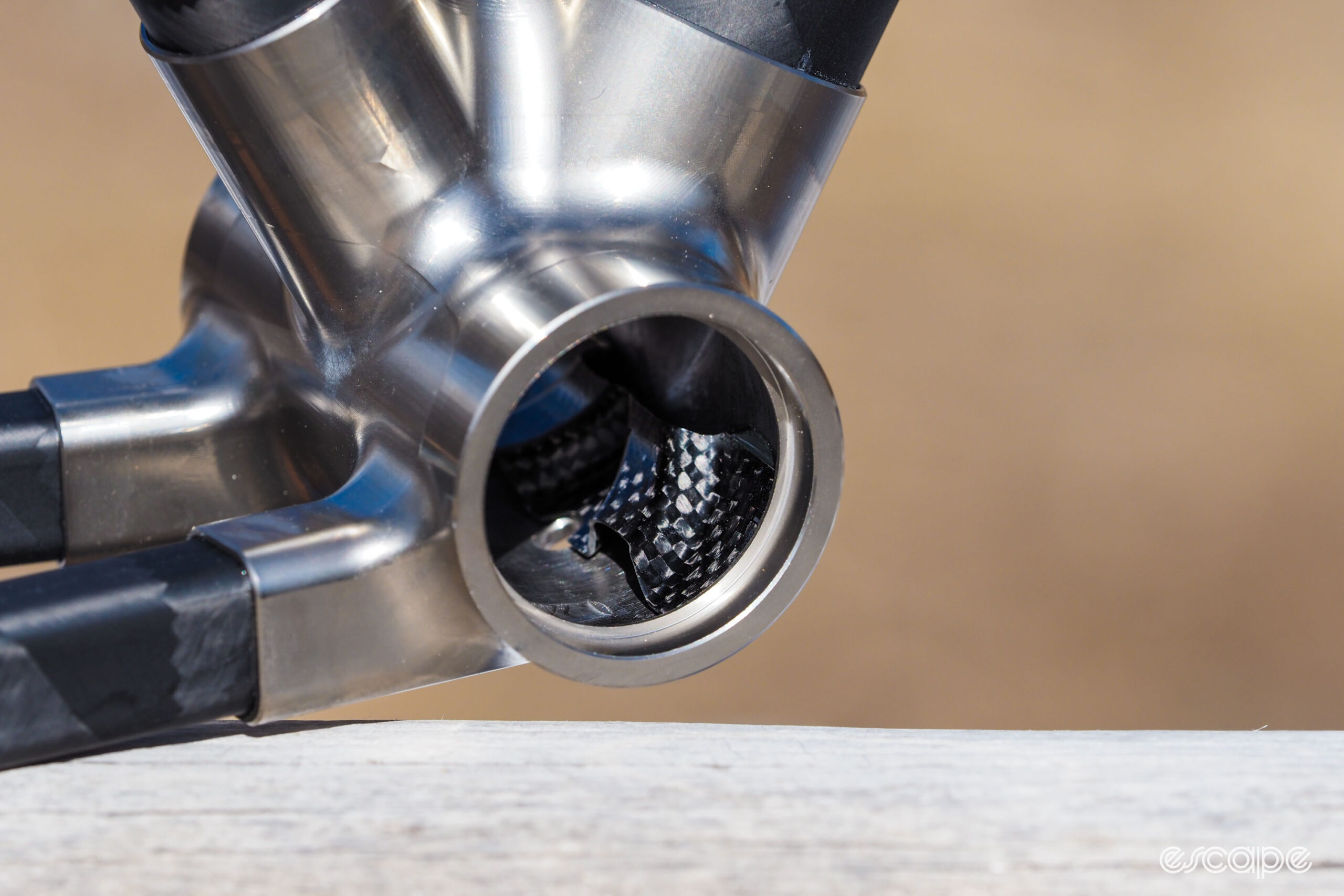

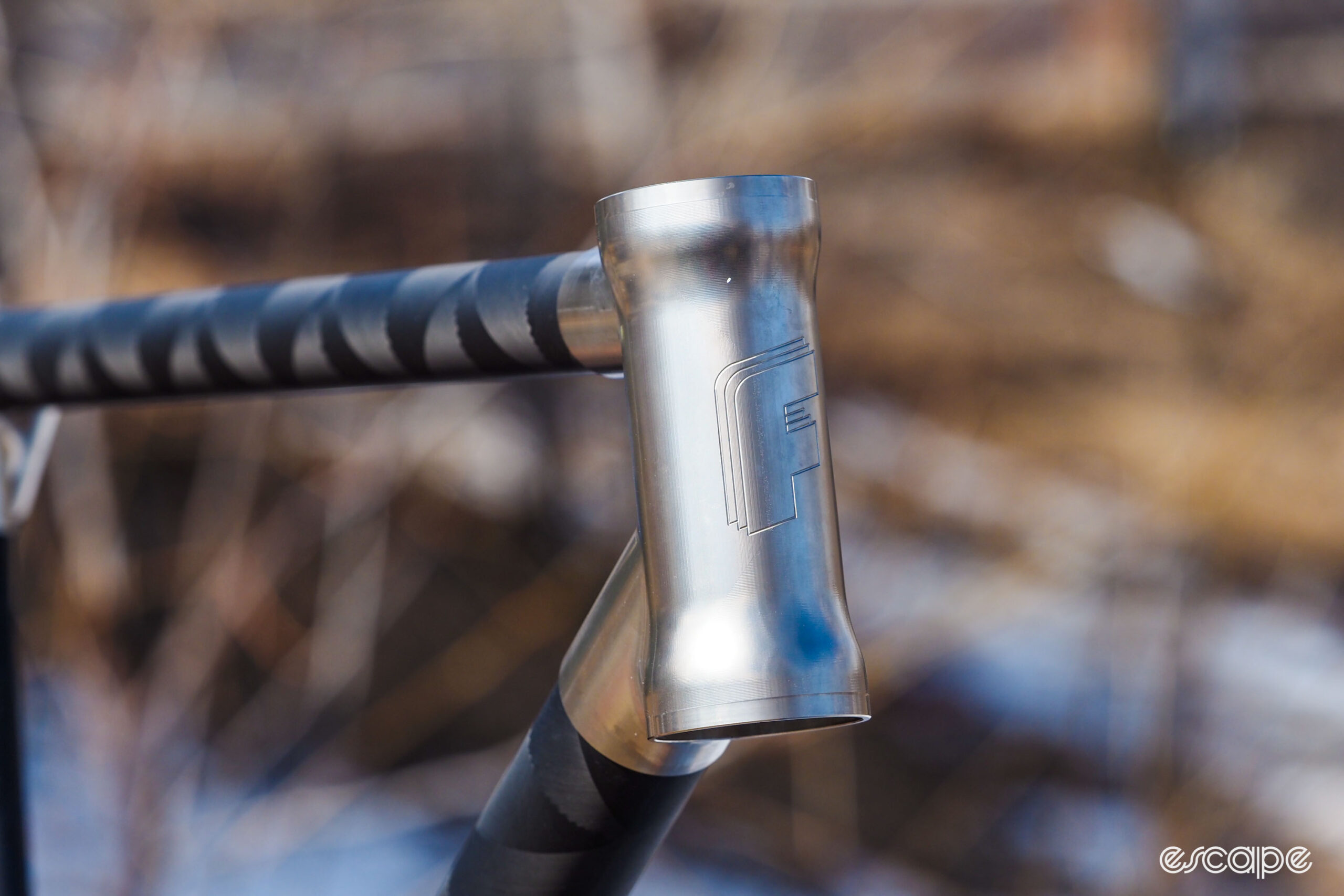

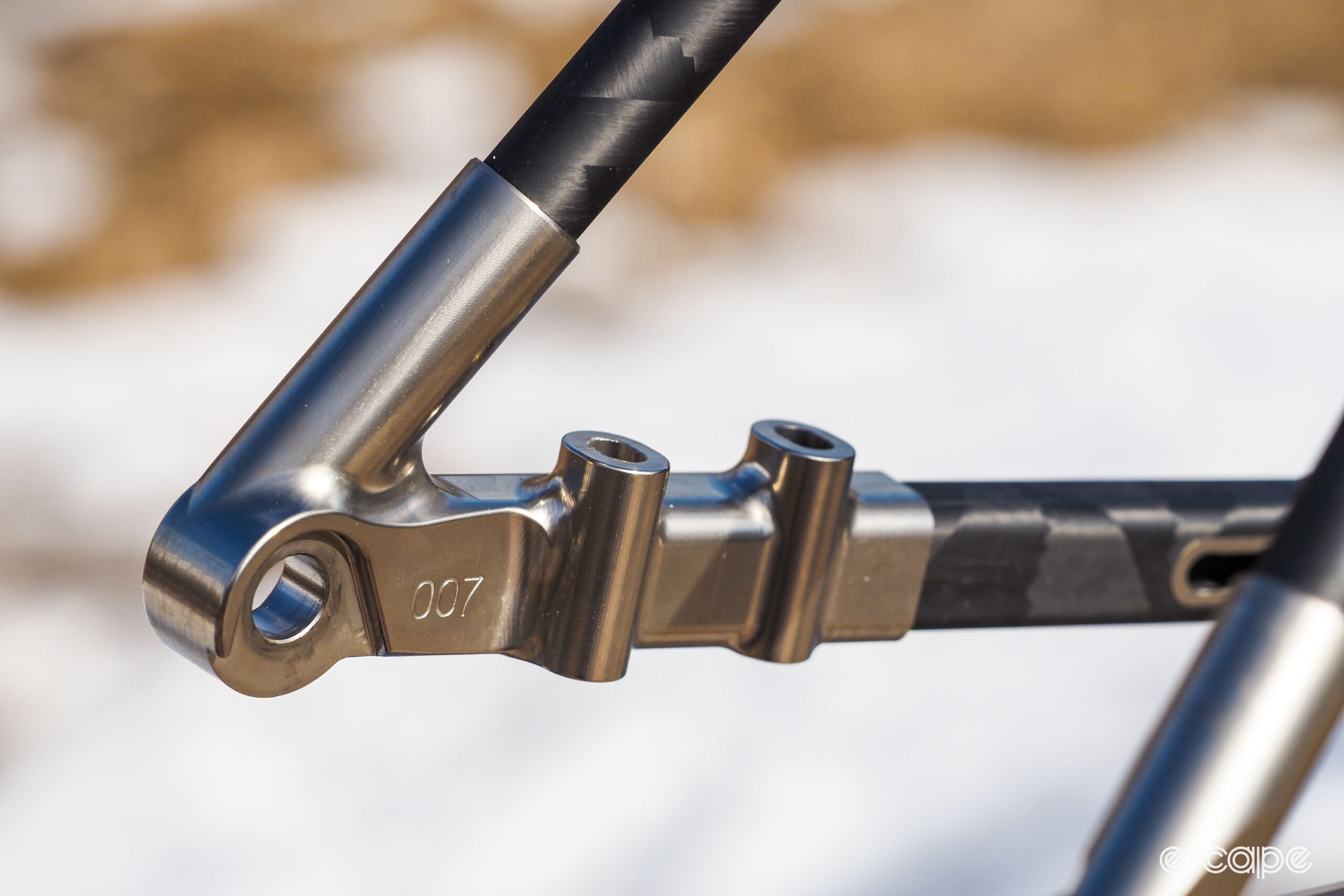
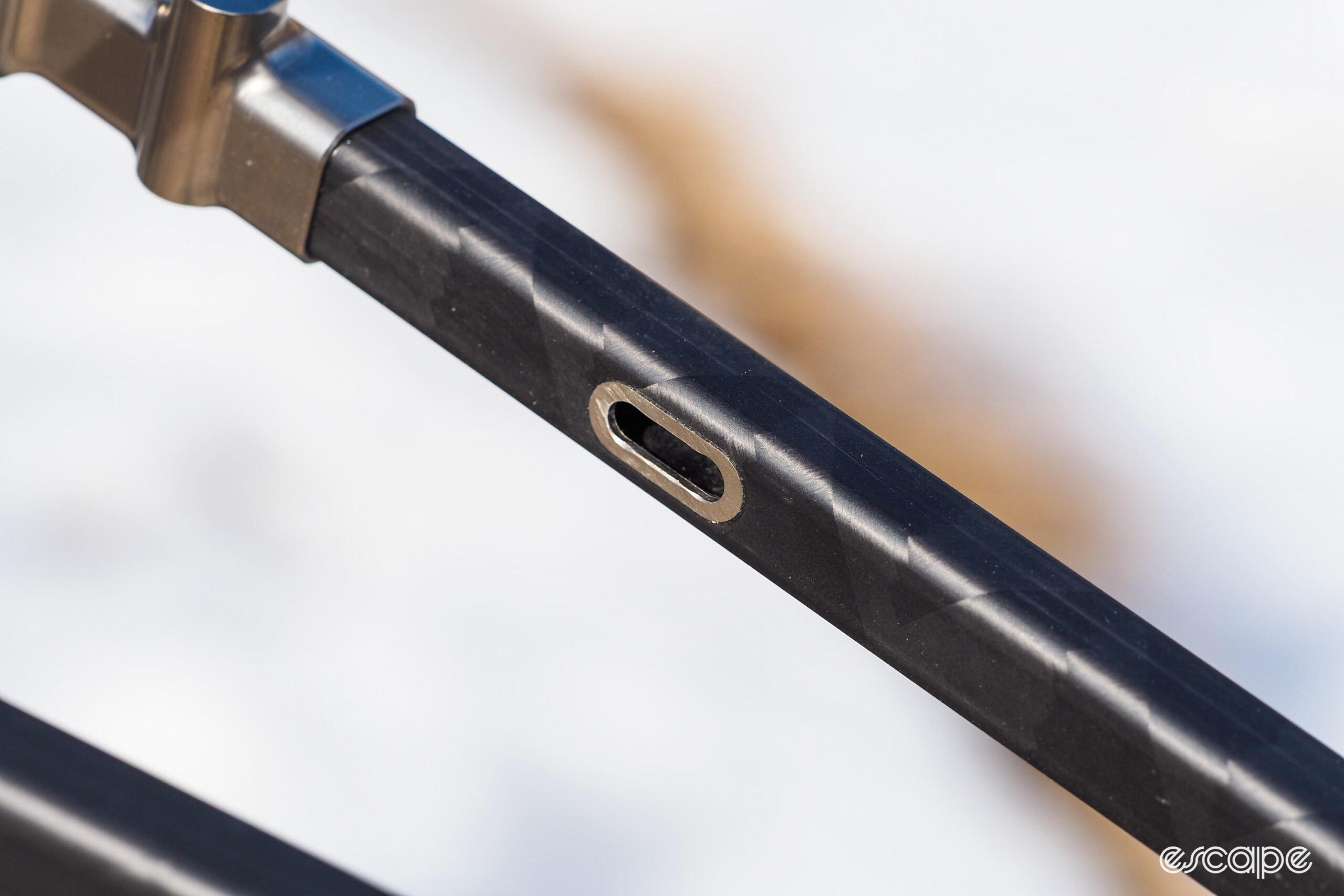
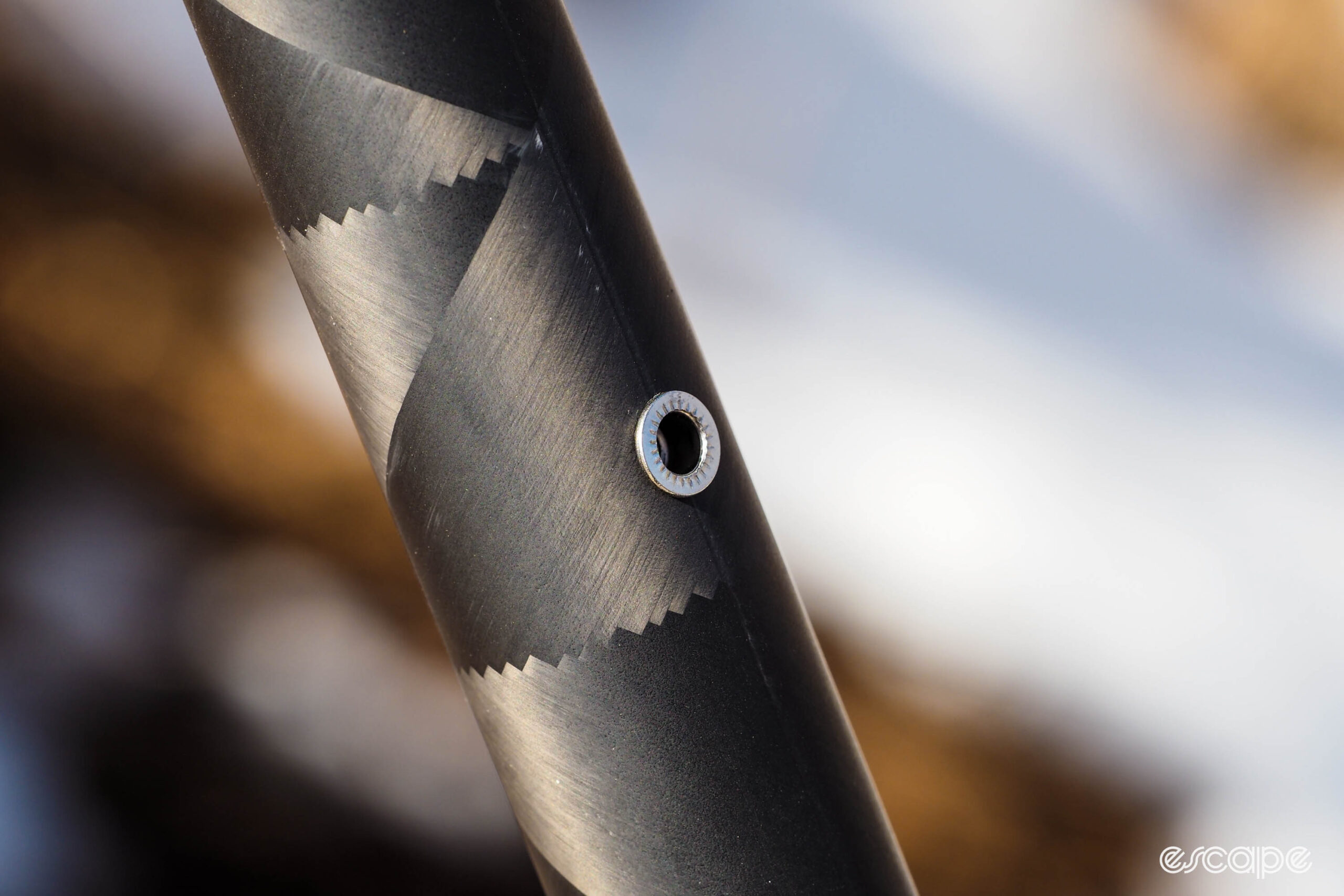
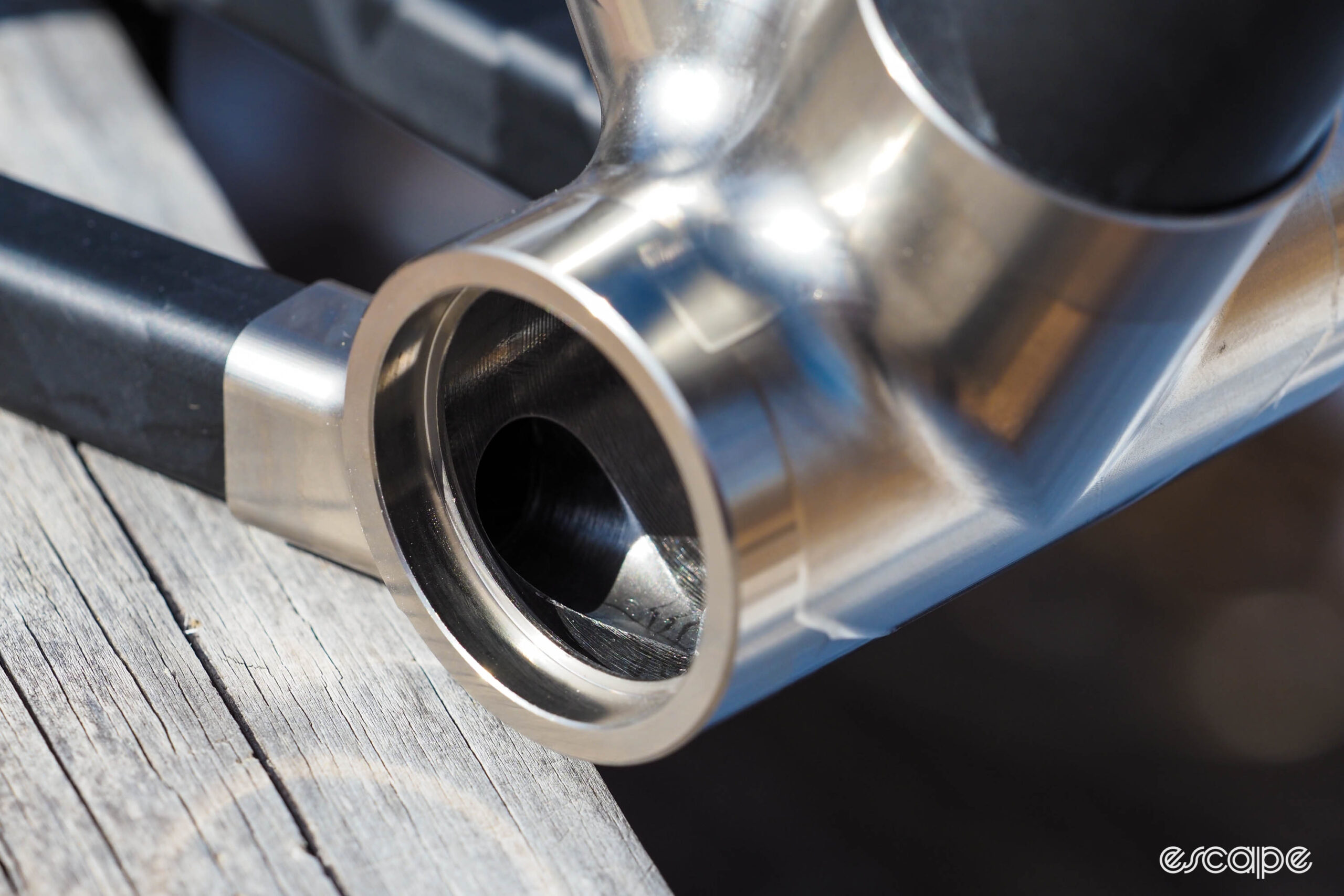
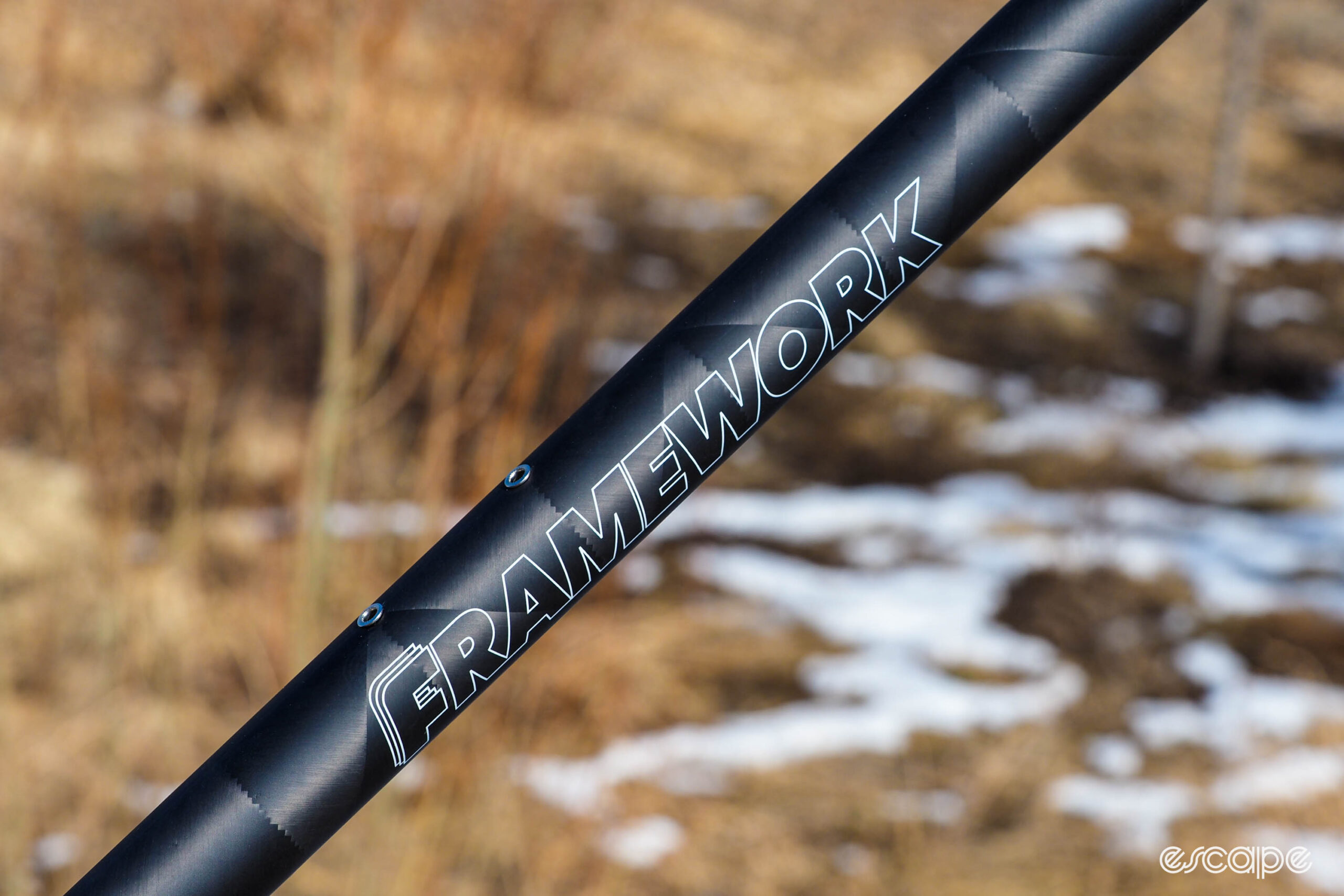
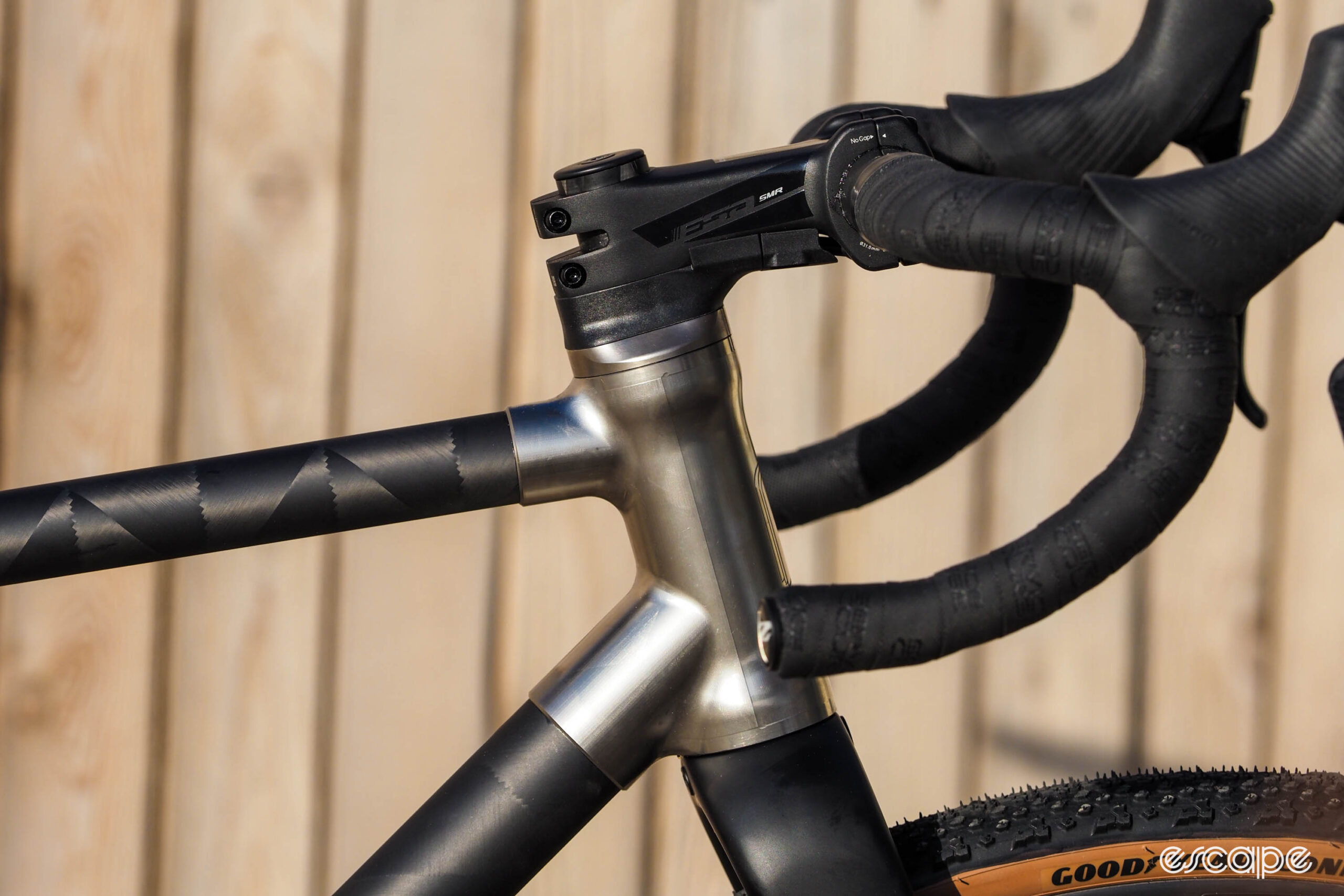
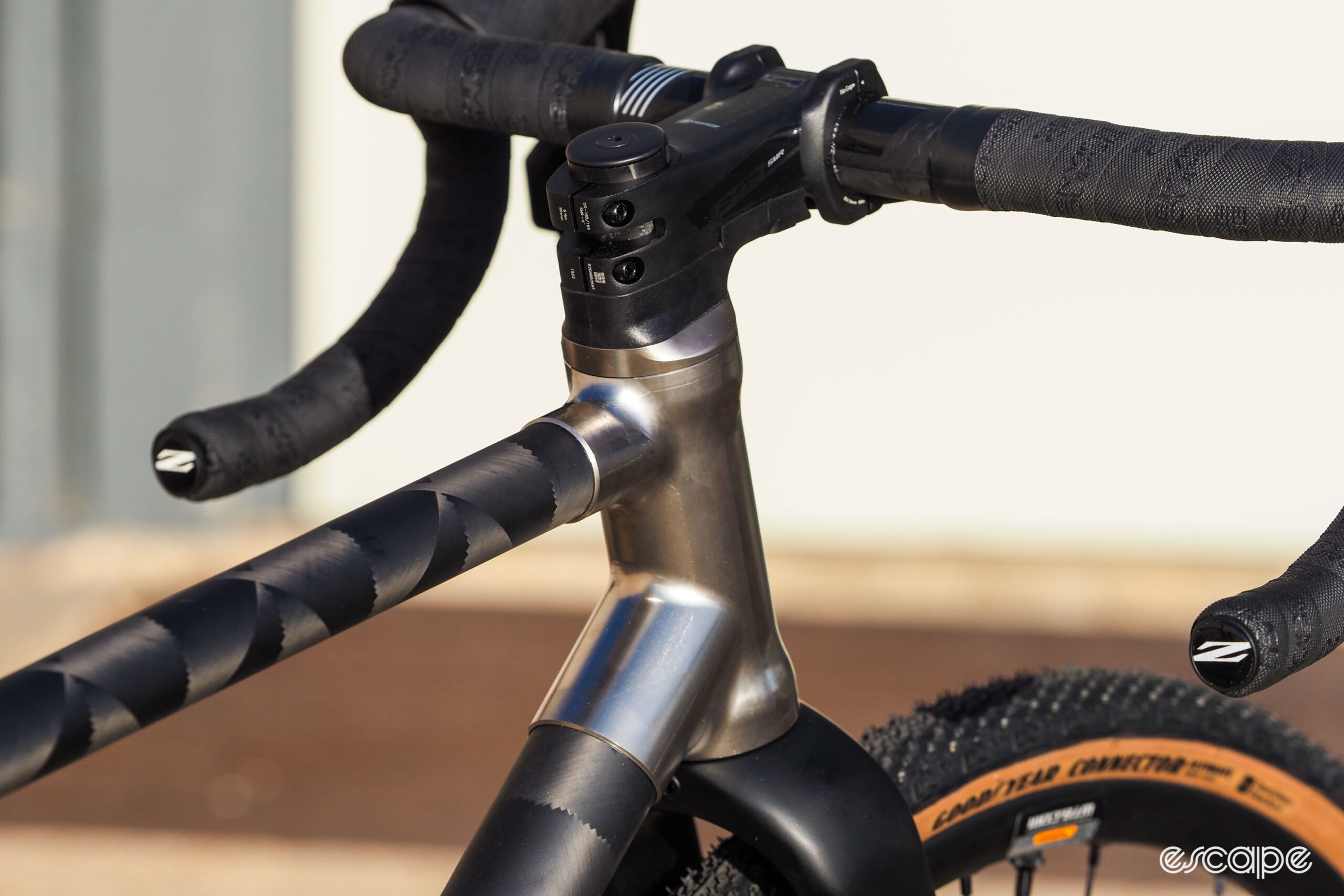
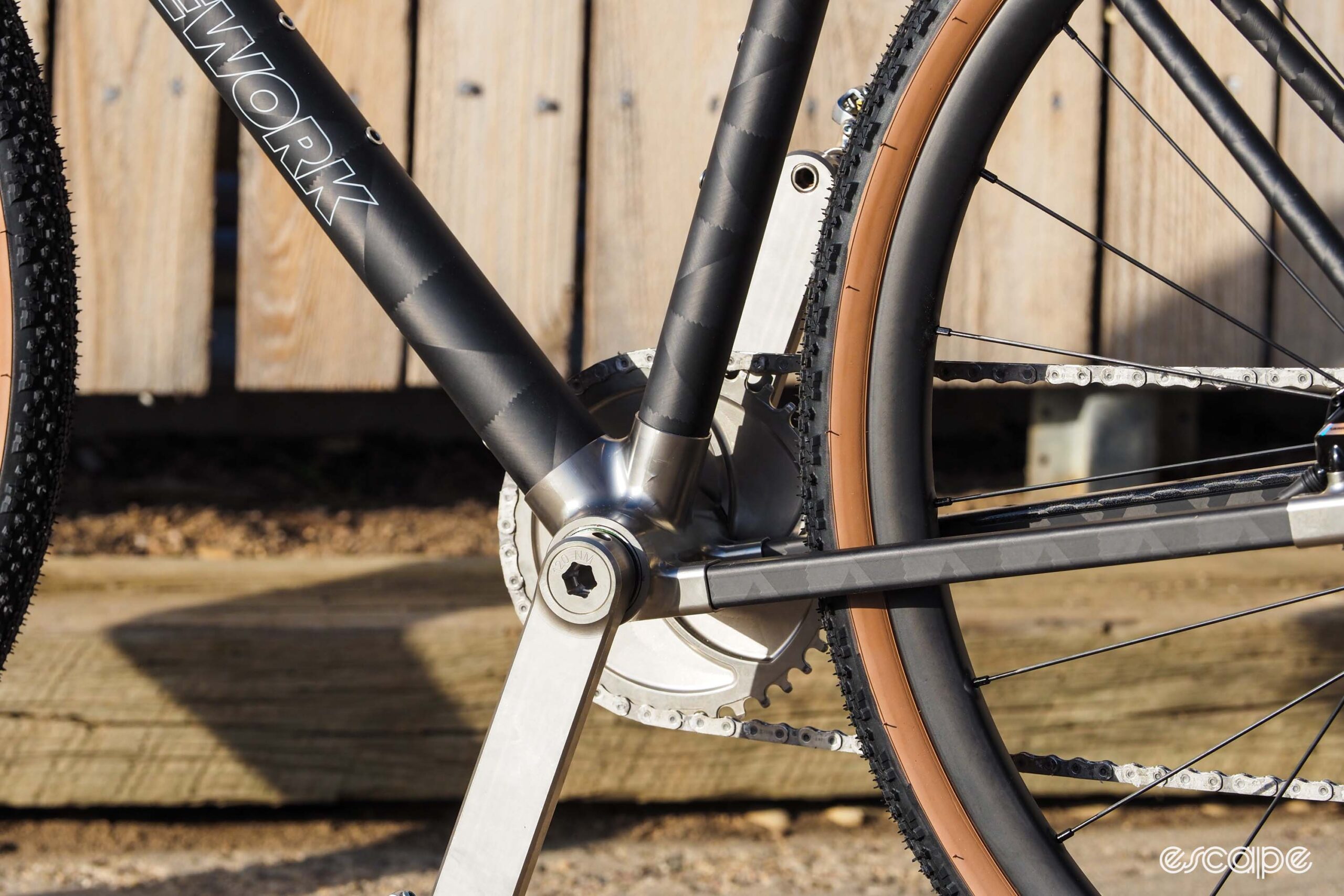
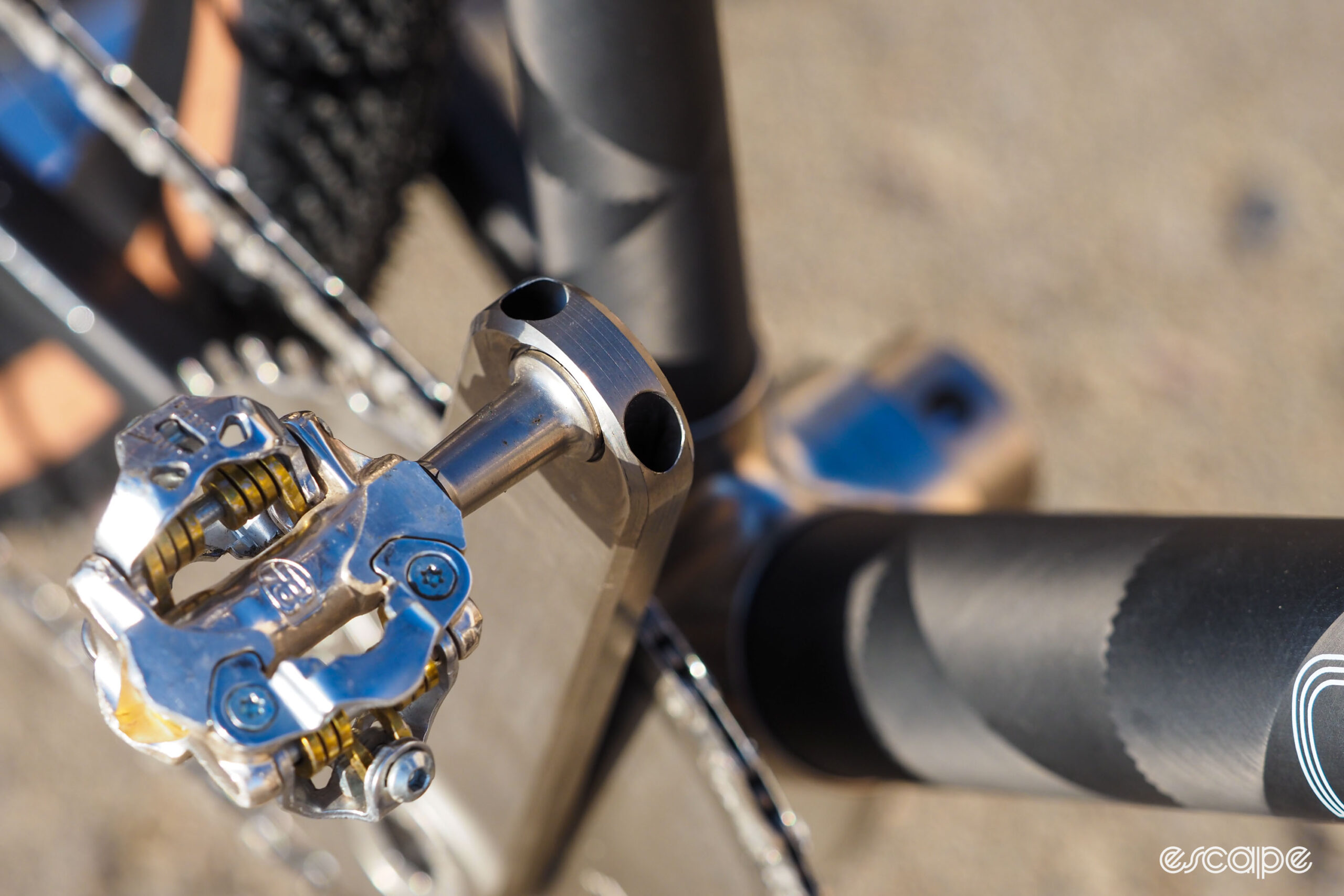

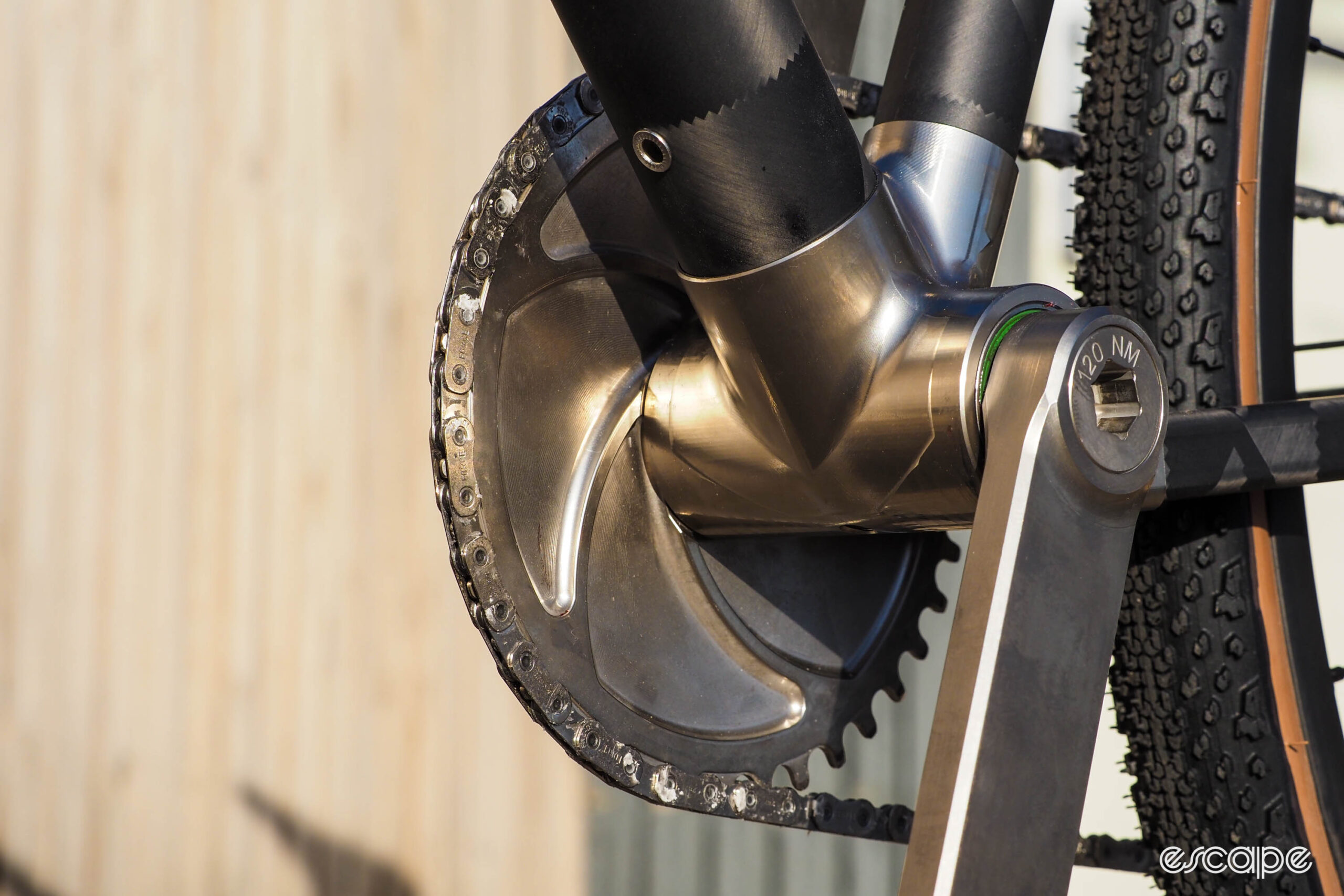
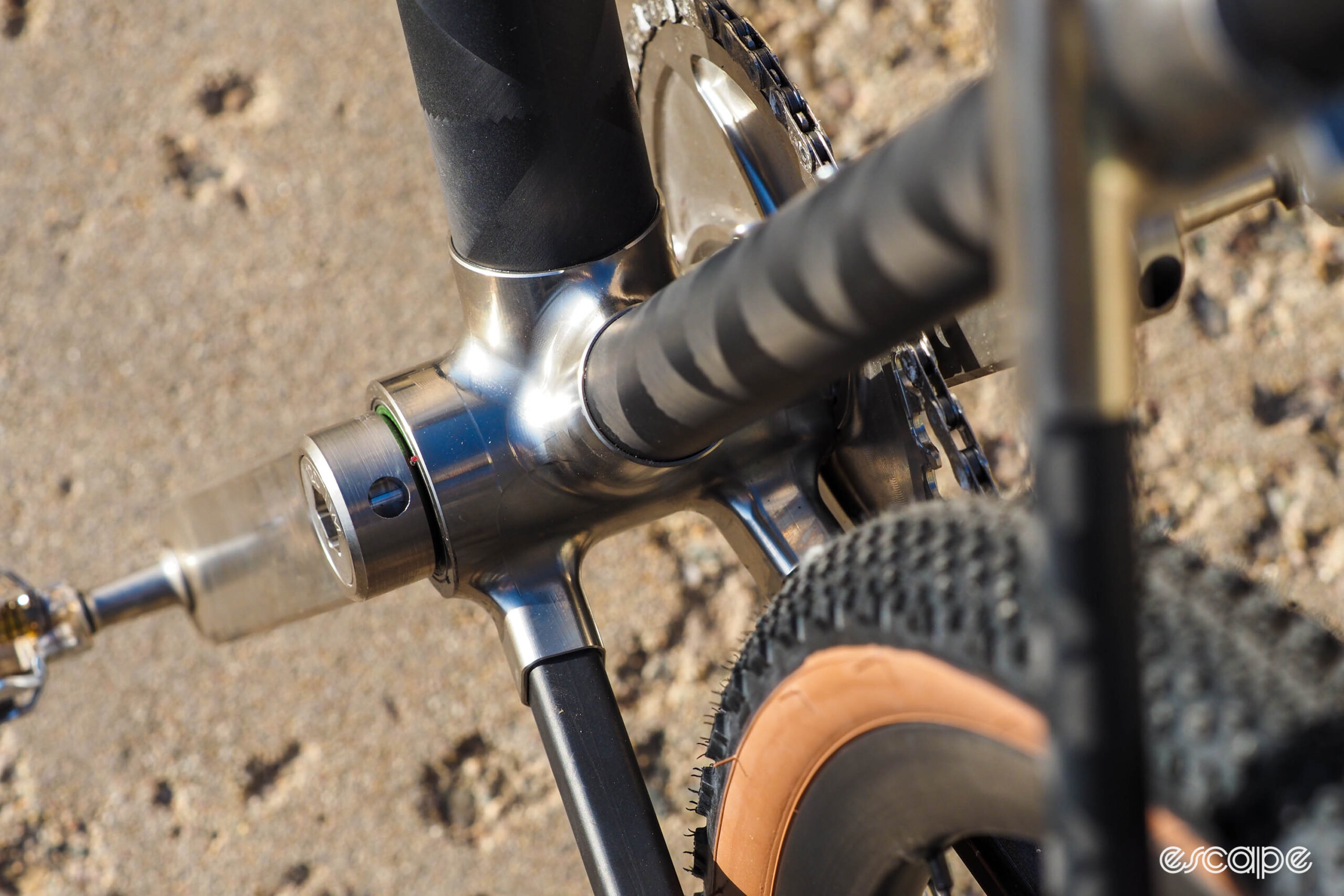
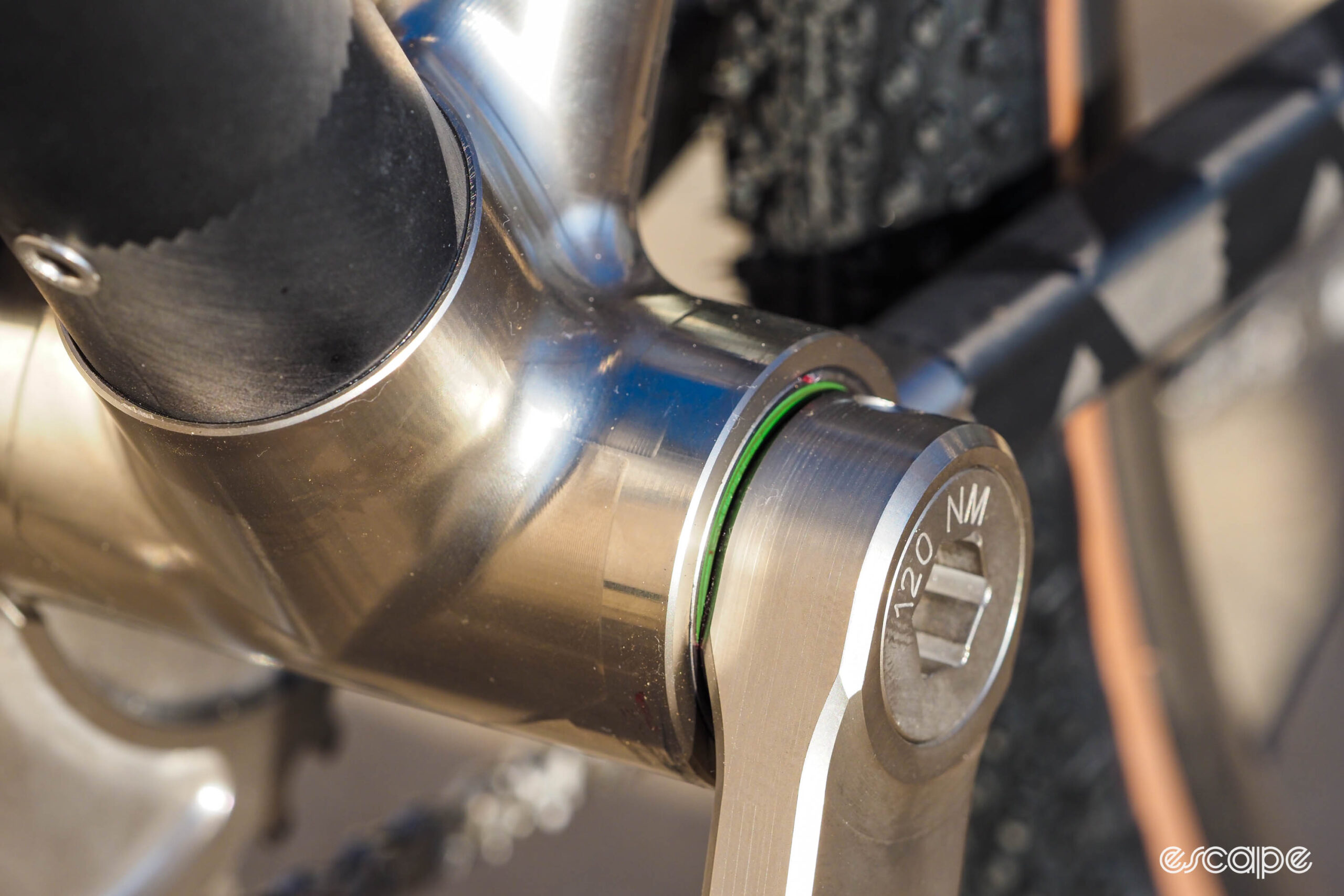
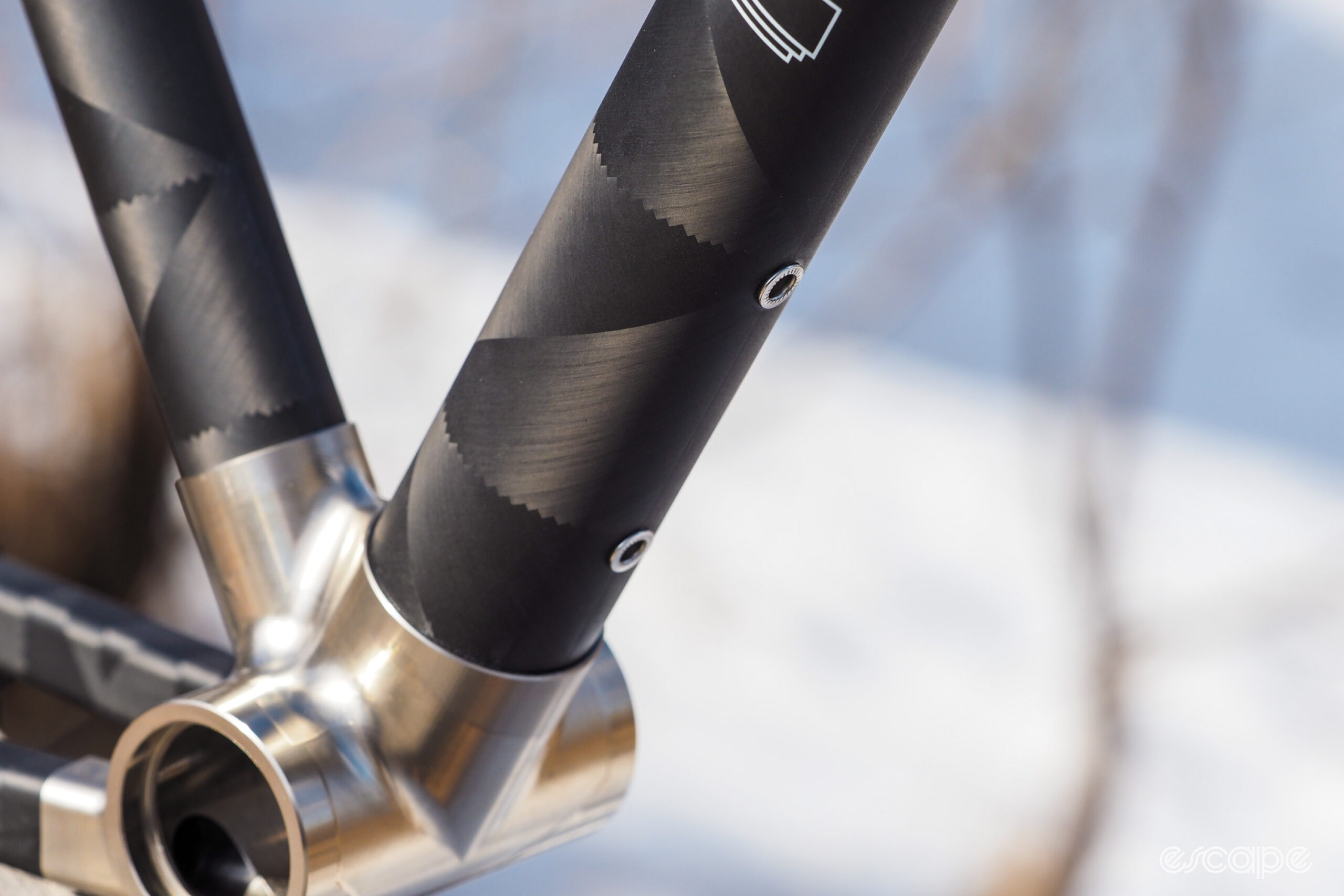
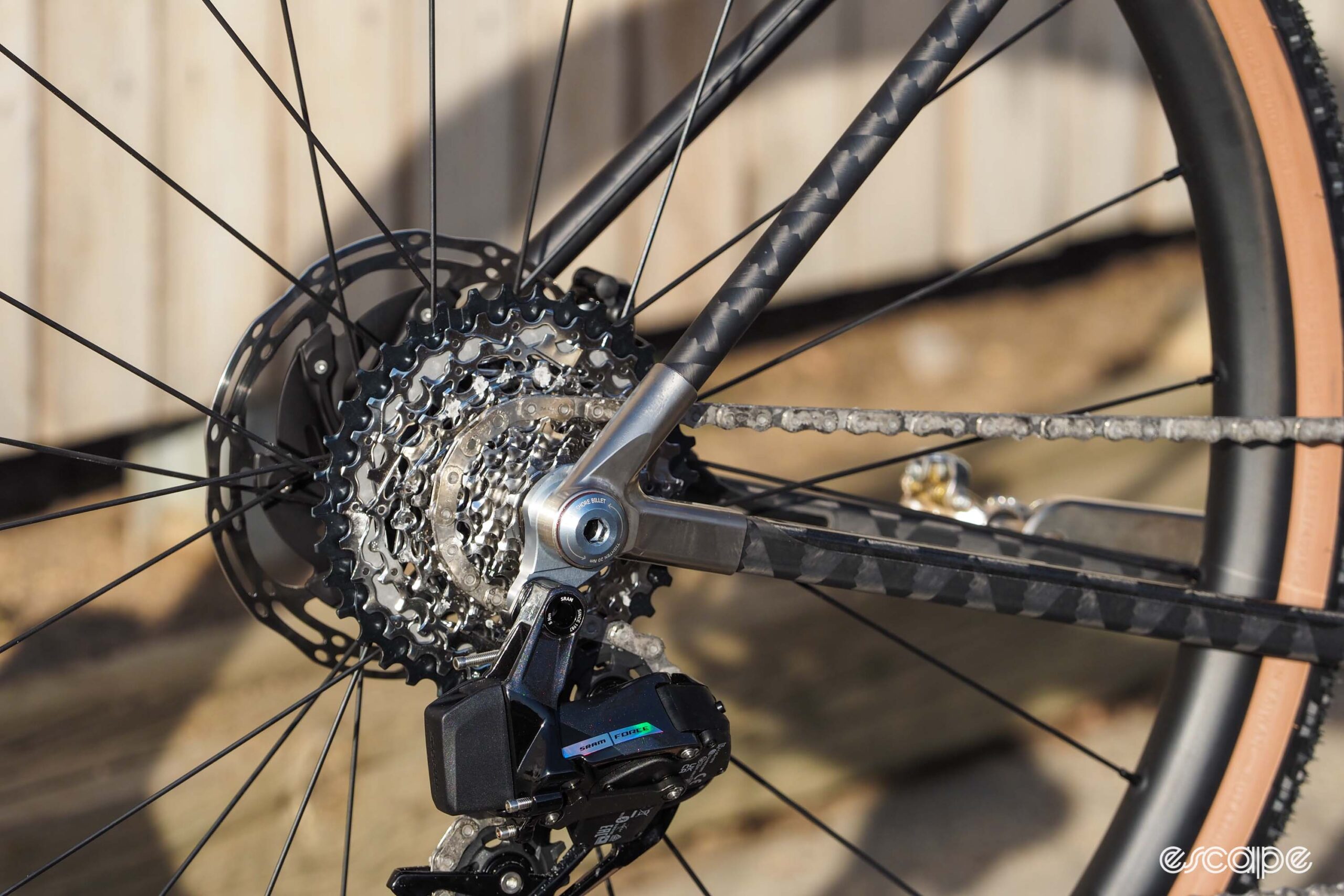
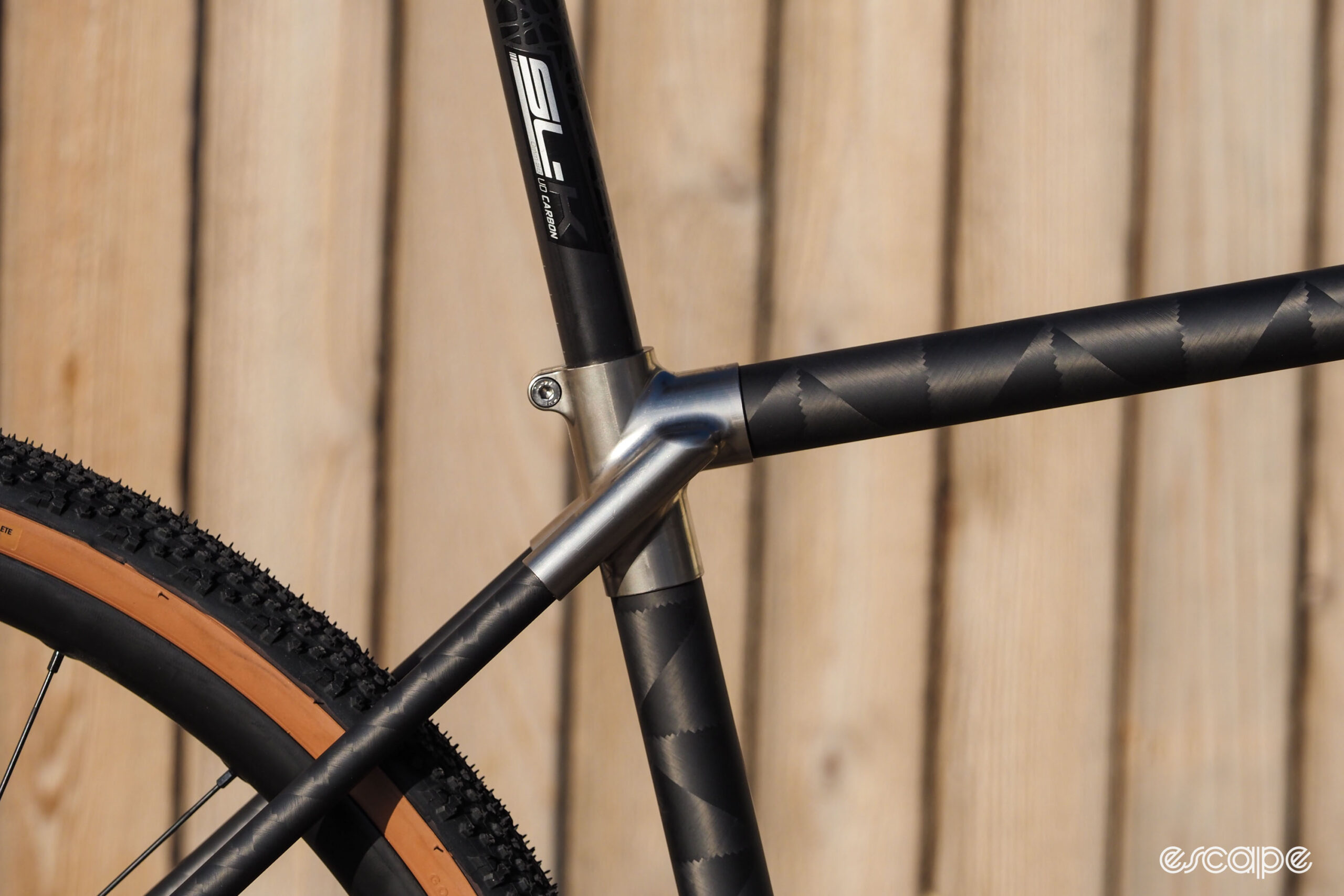
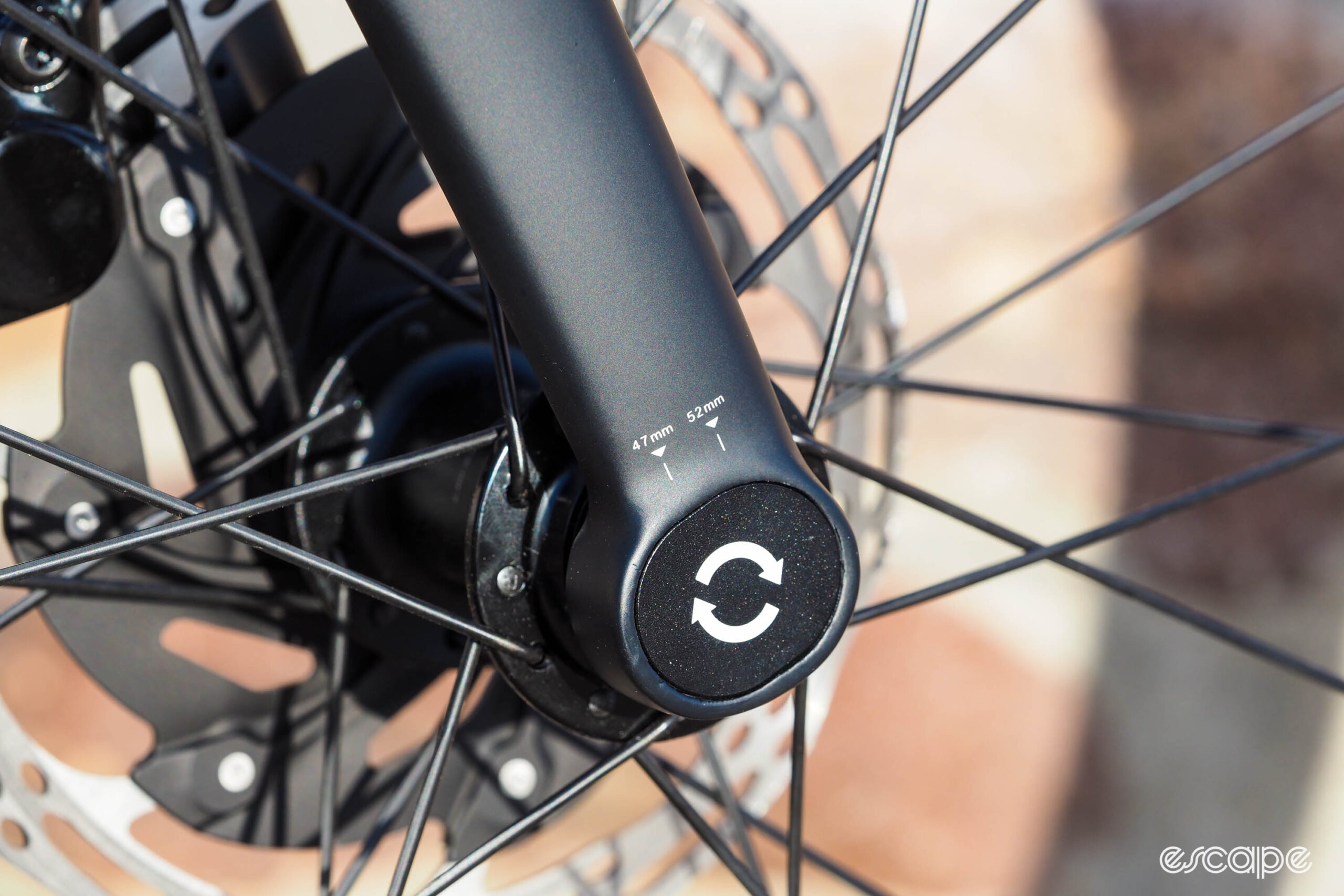
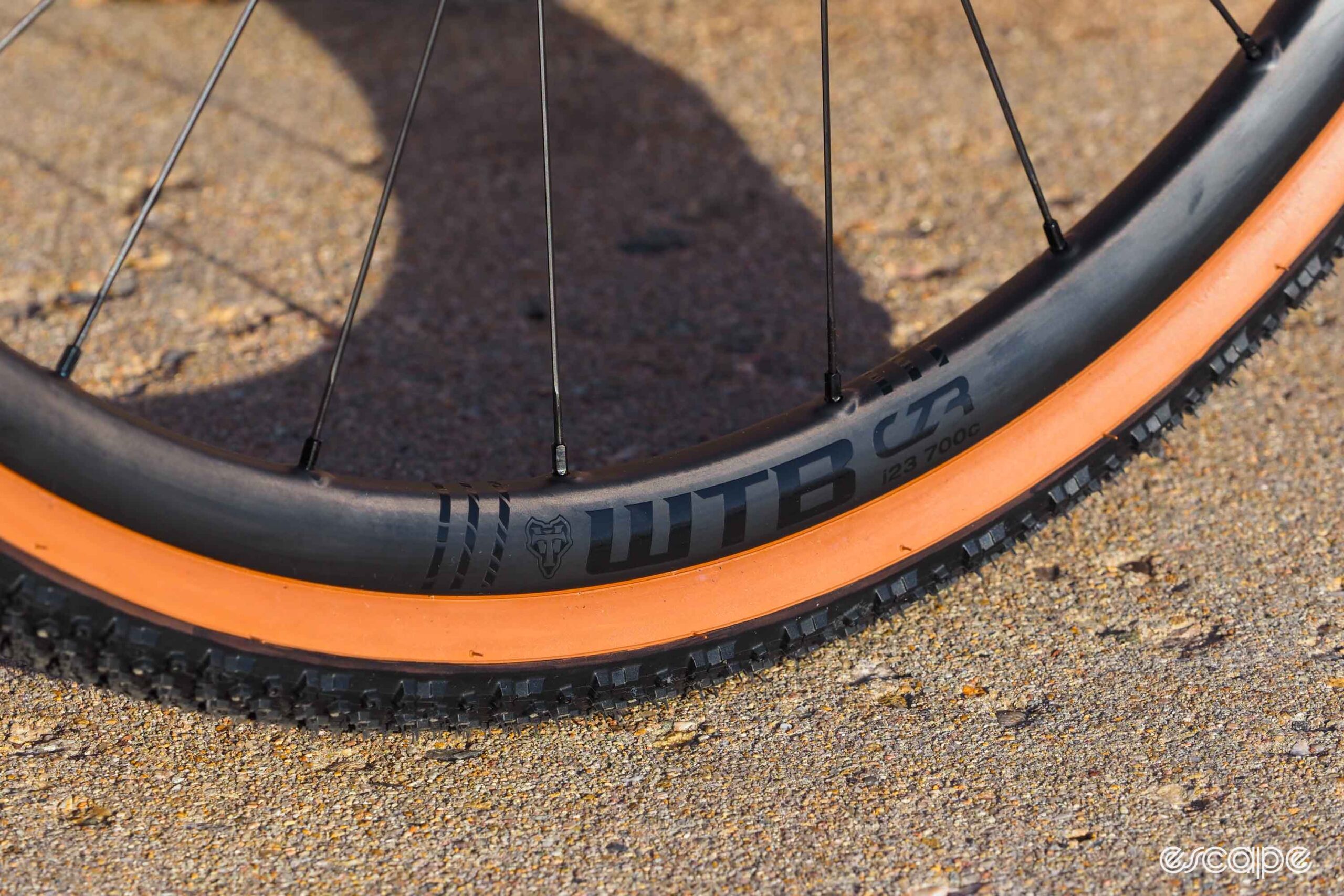
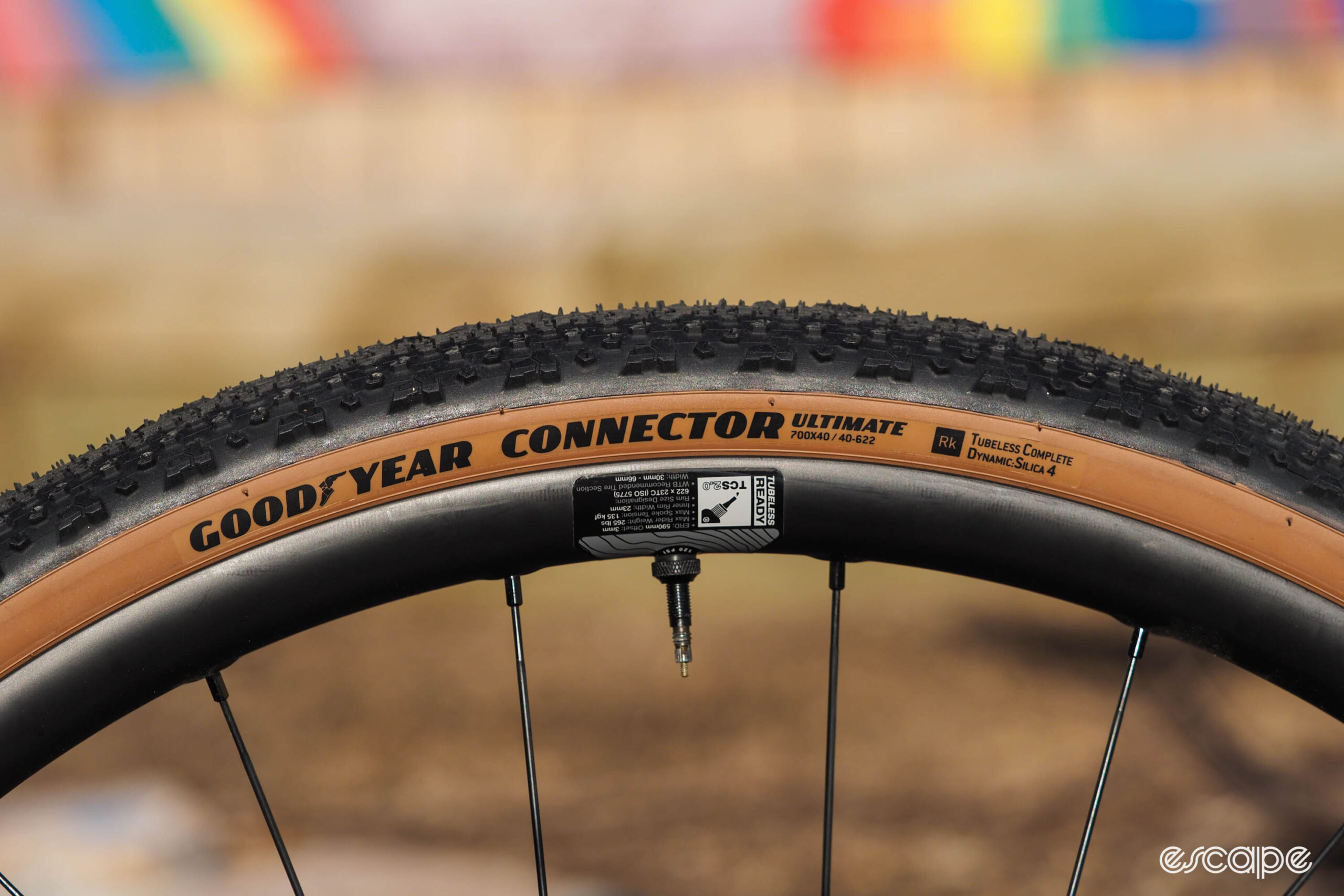

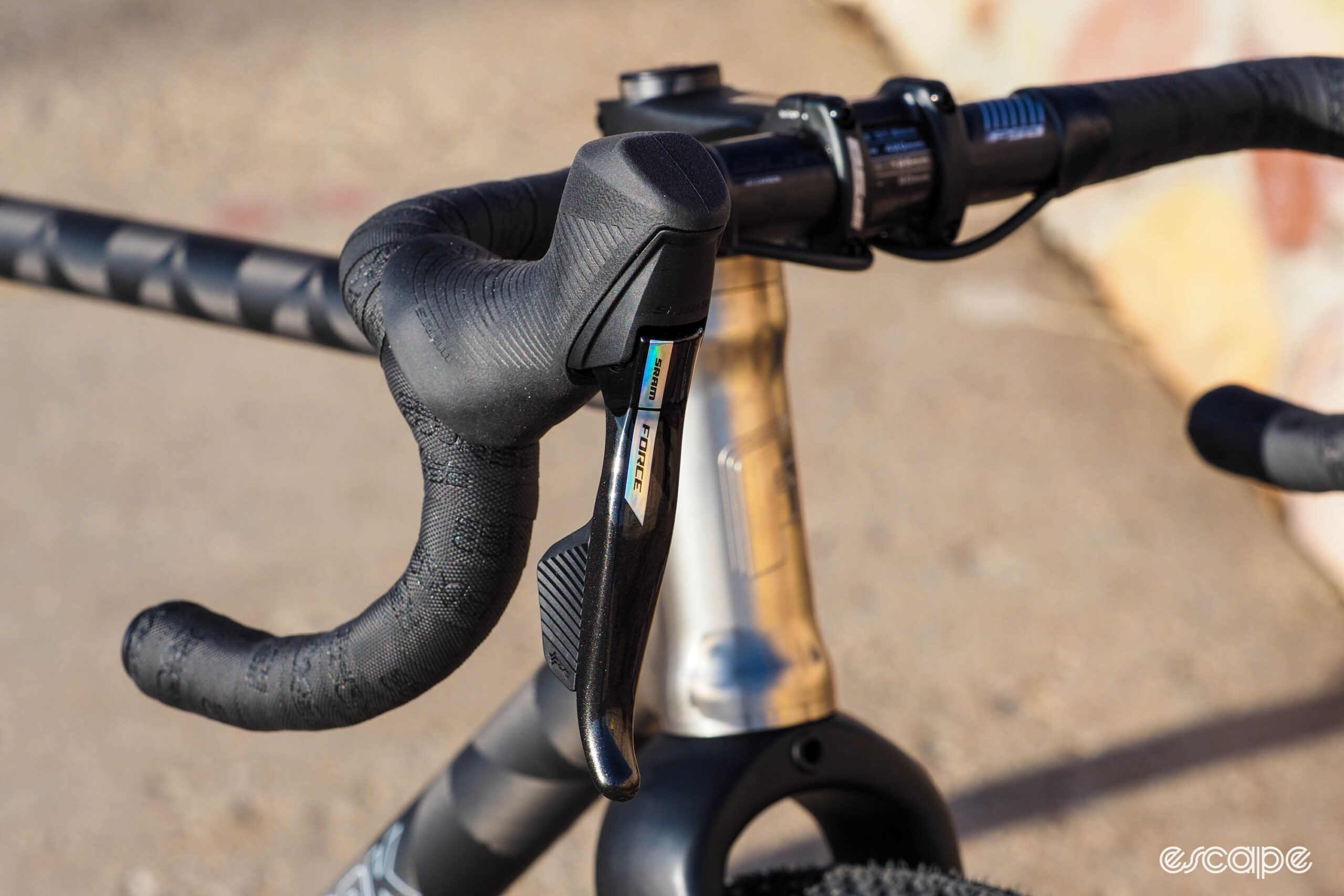
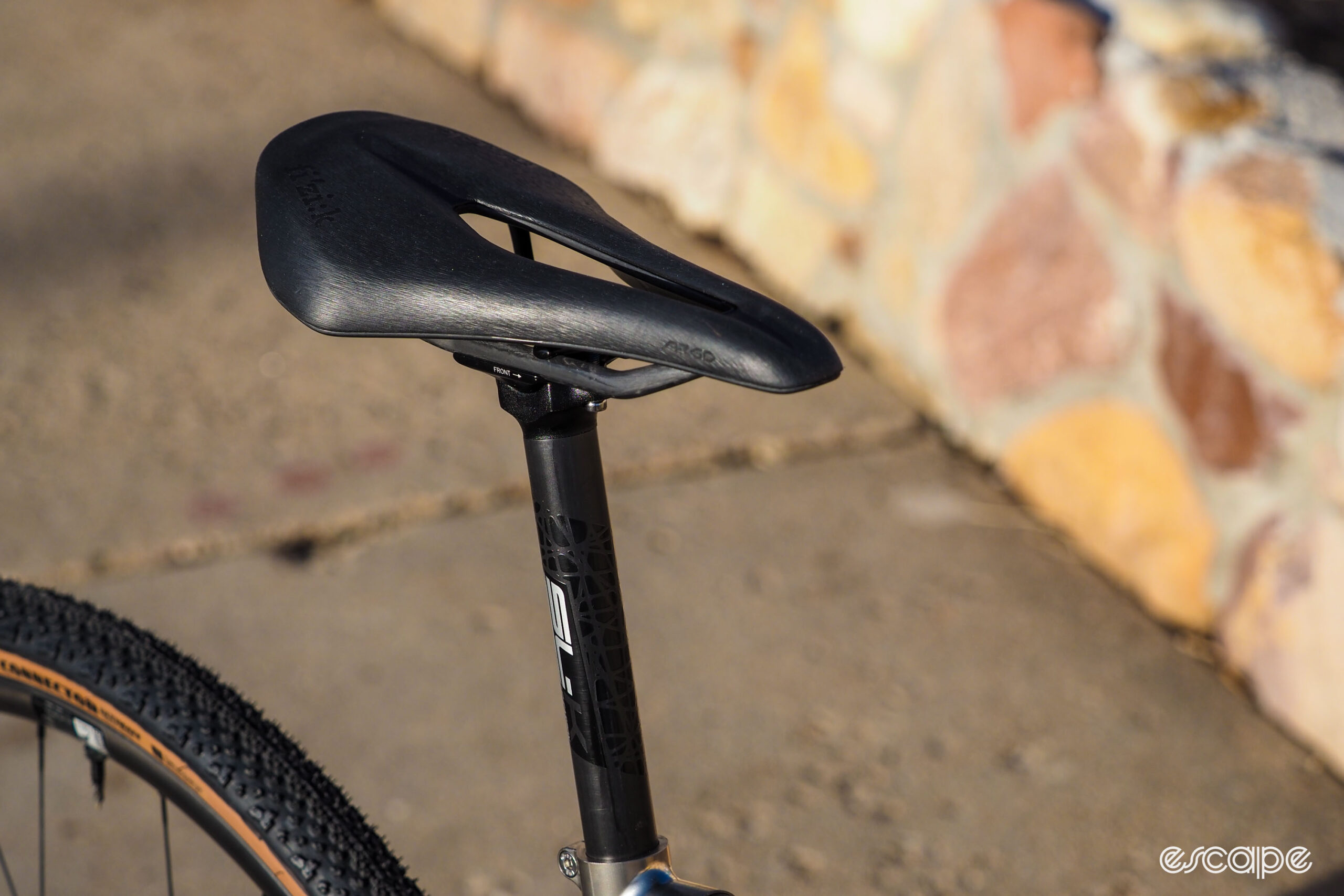
What did you think of this story?


